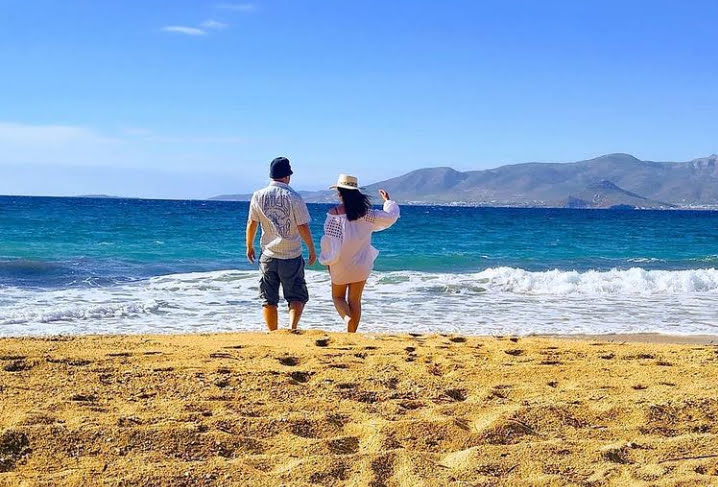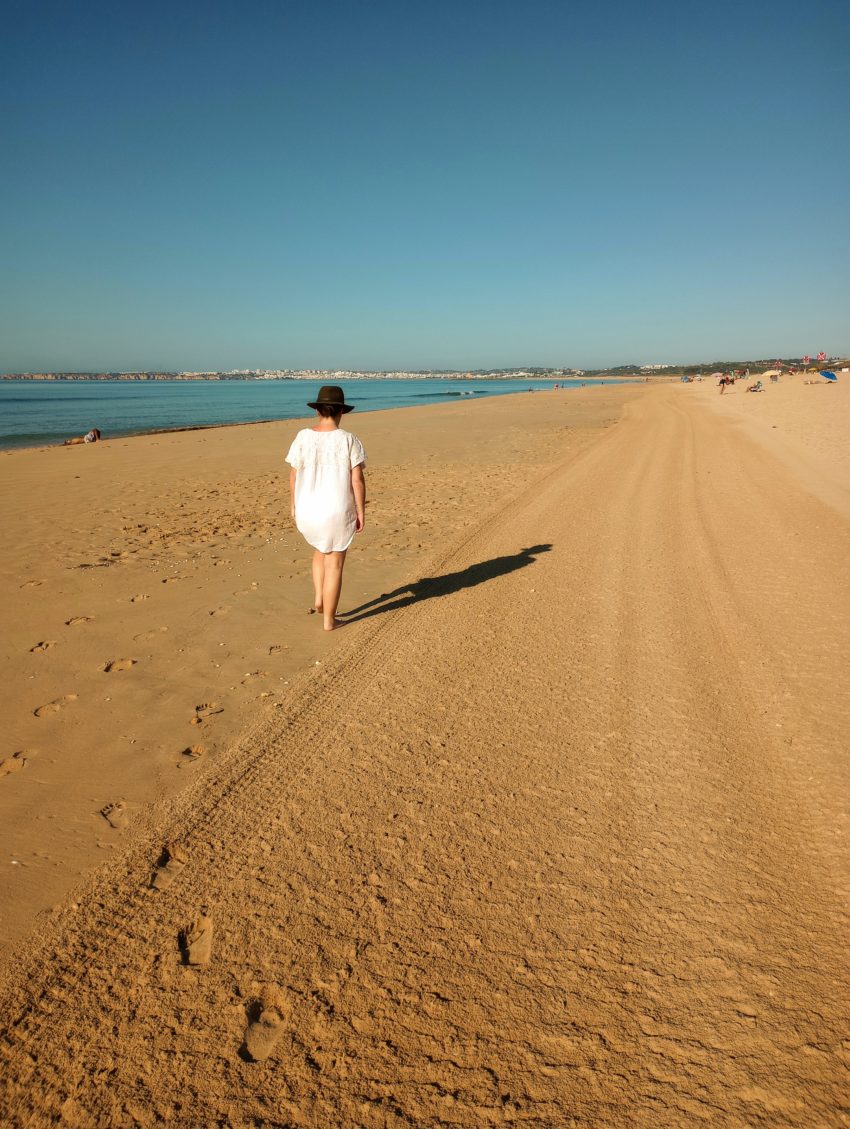Time for a Sunny Break in the Algarve!
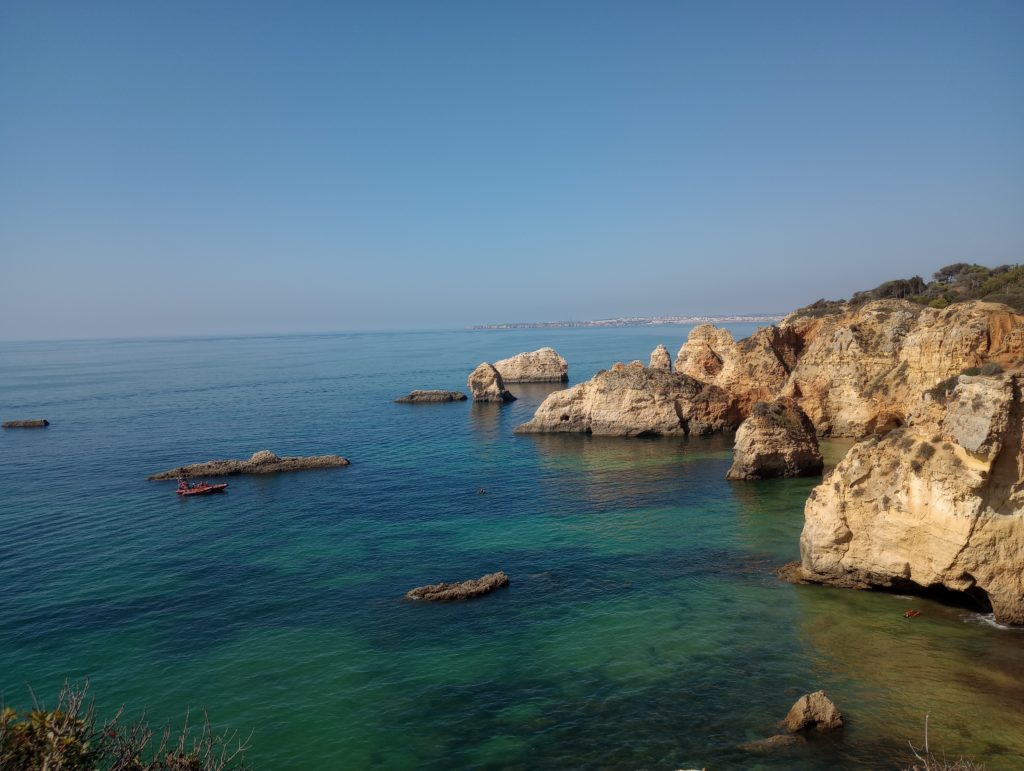
People may think our life is one long holiday. Not so, and we needed a Sunny Break in the Algarve. Let us explain.
Yes, it’s been a while! You could be forgiven if you thought we’d fallen off the edge of the planet! We departed from our temporary home in Cancun, Mexico in April 2022, for personal reasons. When back in Northern Ireland we were thrown into the deep end of the mundane and apartment hunting. The rental market is/was saturated so it took us longer than planned to find the perfectly suited abode. Finally we struck lucky. After the upheaval, a getaway was in order.
Where to?
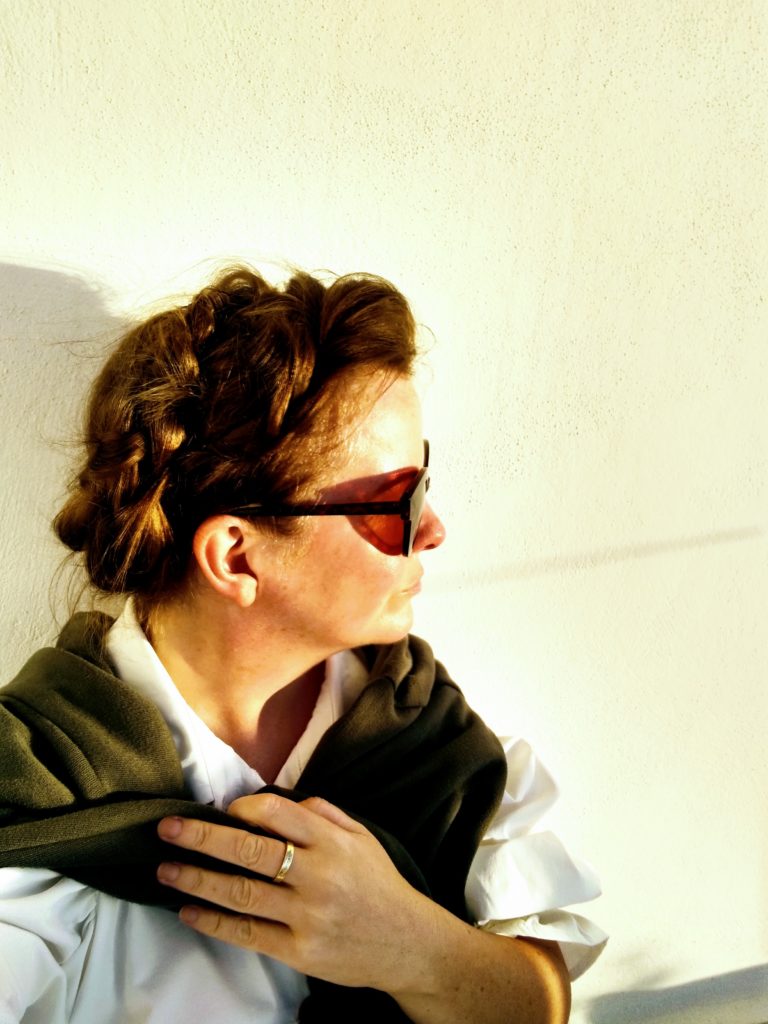
As a last minute decision we were rushed to get booking. Not our usual time researching extensively! We wanted somewhere close and most importantly sunny, since this wasn’t our usual year plus long trips!
It was between Greece, Spain or Portugal. We quickly found that Spain was discounted right away due to the ridiculous, still in place, testing and ‘show me your papers!’ malarky.
Our beloved Greece was a close call, but because of a lack of direct flights to the Cyclades, and we weren’t sure what the muzzle situation would be like on internal flights, we opted for Portugal. Main reason was, that there were no entry requirements, we hadn’t been there before, and the weather seemed reasonable. So we packed our bags for a sunny break in the Algarve.
Travel to our sunny break in the Algarve.

The flights with EasyJet were £600 total. We thought a bit overpriced, but the journey was only 3 hours. A crack of dawn start had us at Belfast International airport at 4.50am. Everything was smooth with no delays as we arrived in Faro slightly earlier at 9.20am.
Car hire
As we like to explore new places, we decided the best bet would to hire a vehicle to explore during our sunny break in the Algarve. We went with Hertz. As a gold member, we got a bit of discount and express service, paying £285 for the 9 days of rental.

As usual, Pre rental photos were taken to strengthen our position in case of any ‘mishaps’ (thankfully there were none). While we choose our own excess insurance, using carhireexcess.co.uk, we did take the desk clerk up on the €13 (total for the duration) use of the toll booth tracker. This made life so much easier when travelling an paying. Indeed, the toll payments came off my ‘Clarity Card’ a week or so after the Sunny Break in the Algarve was a distant memory.
Specifically, we choose to use the Clarity Card as there would be no bank charges for paying foreign currency on the card. This saves as the price can add up quickly.
Accommodation for our Sunny Break in the Algarve
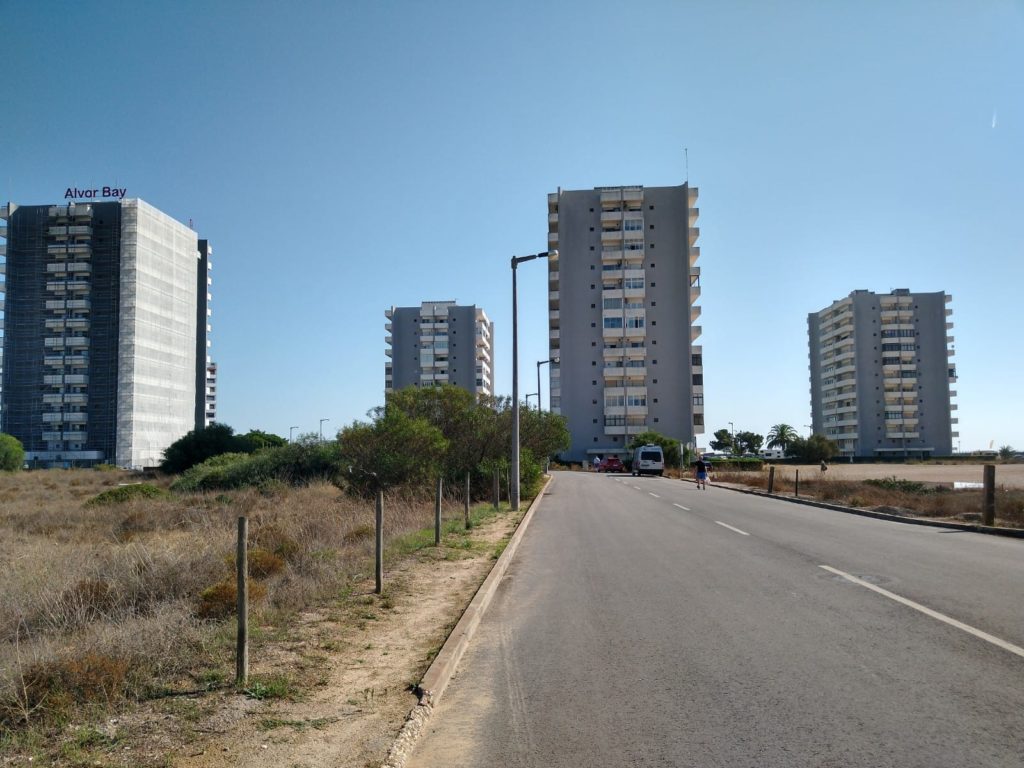
When scouring the internet for places to stay, we found hotel type accommodation was far and few between. Portugal seemed to focus more on guesthouses. In the end we decided on an Airbnb in Alvor, costing just over £500 for a week.
The pad in Alvor – Our home for the sunny break in the Algarve
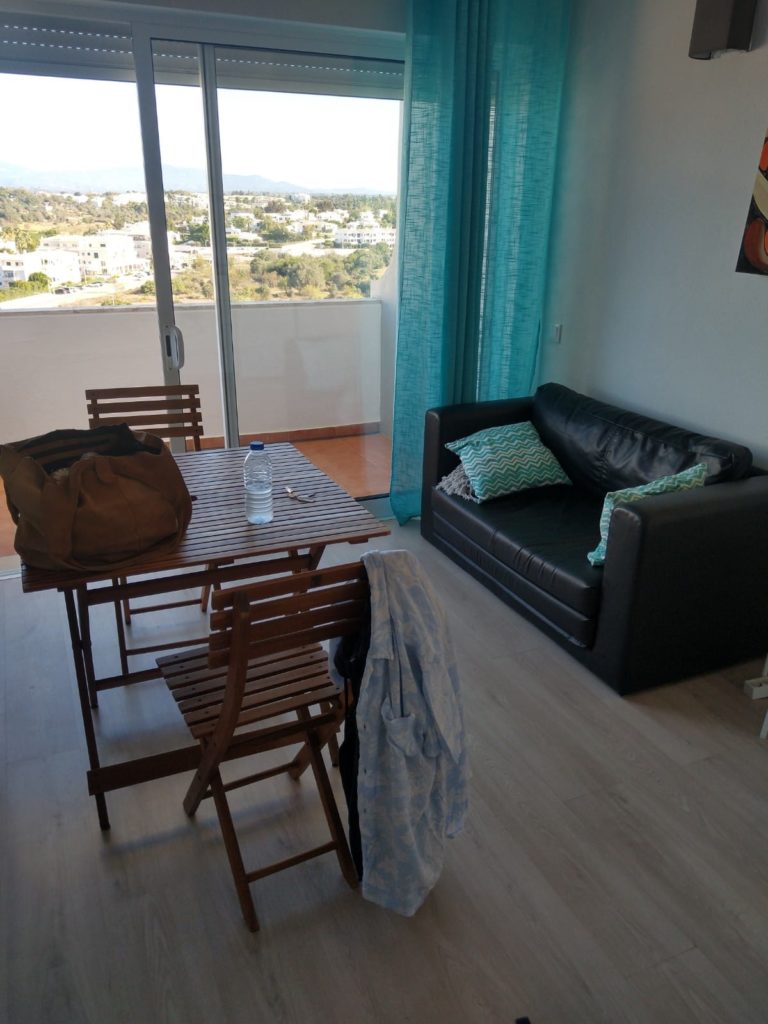
On arrival, the apt complex didn’t look the prettiest. It was also surrounded by other ugly tower blocks which looked a bit rundown. It certainly didn’t have that local charm of, lets say, Naxos, Greece.
However once we took the rickety old lift up to the 9th floor apt, it wasn’t that bad. It could of done with a bit of updating, but it was relatively clean and mostly representative to the photos online.
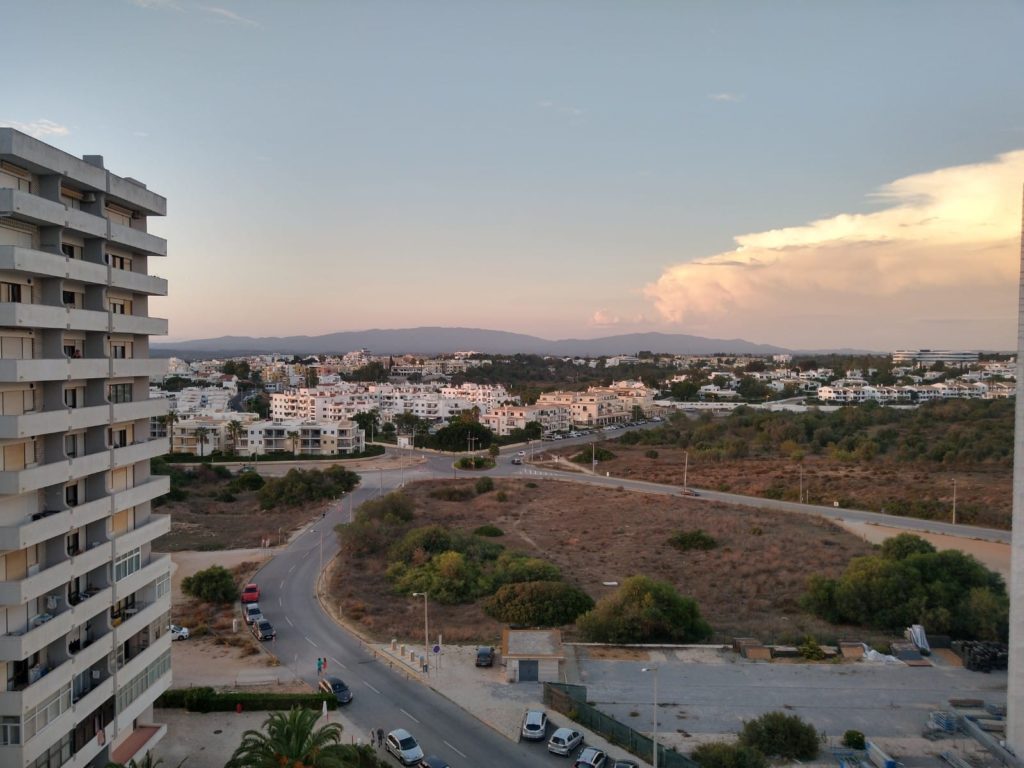
The ‘sunset’ view, which was boosted about, was more of a side squint, stretching precariously over a low walled balcony, in the distance. The straight facing view was that of the town and some building work. Still we’d make it our home for our time in Alvor.
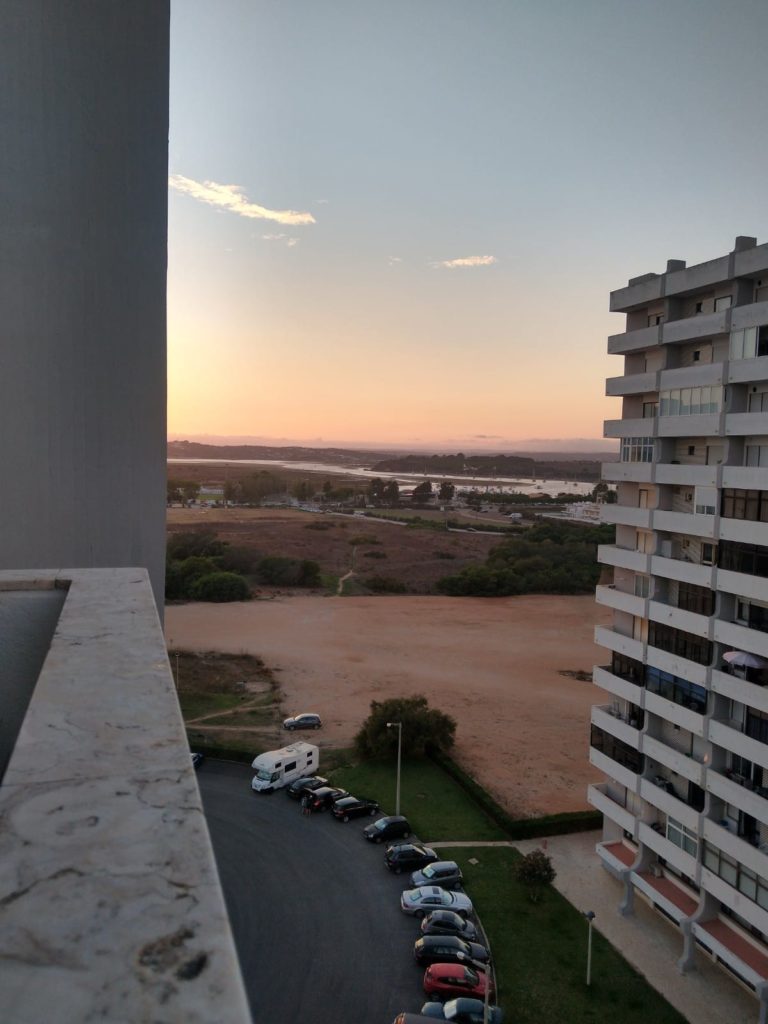
What to see from our sunny break in the Algarve ‘base’?
Alvor town

Alvor is a small town, which sits on the banks of the Ria de Alvor Estuary. A former fishing village, it has still kept some of its tradition and, to this day, you can still see some fishing boats out to sea and bobbing in the modest harbour.
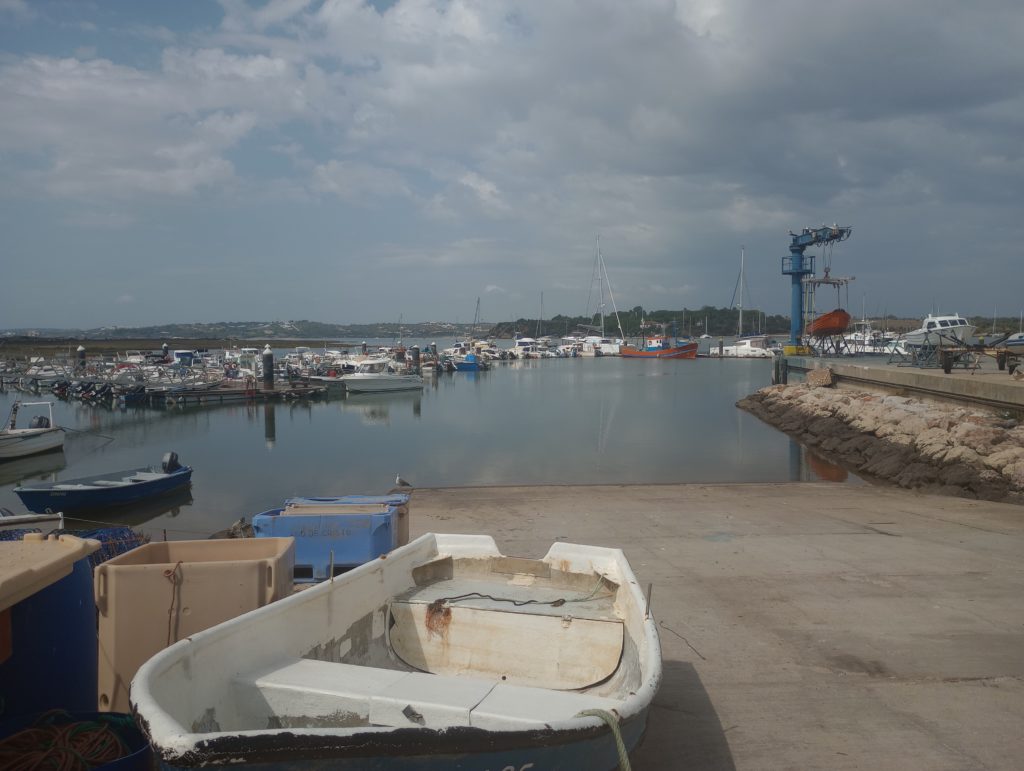
It has a good range of restaurants to suit all tastes, a spattering of shops, bars, with especially a noticeable influence and flavour of Irish bars! Tourists are a mix of Portuguese, English, Irish and Germans. The streets are narrow and colourful oozing a certain charm.

Cemiterio de Alvor
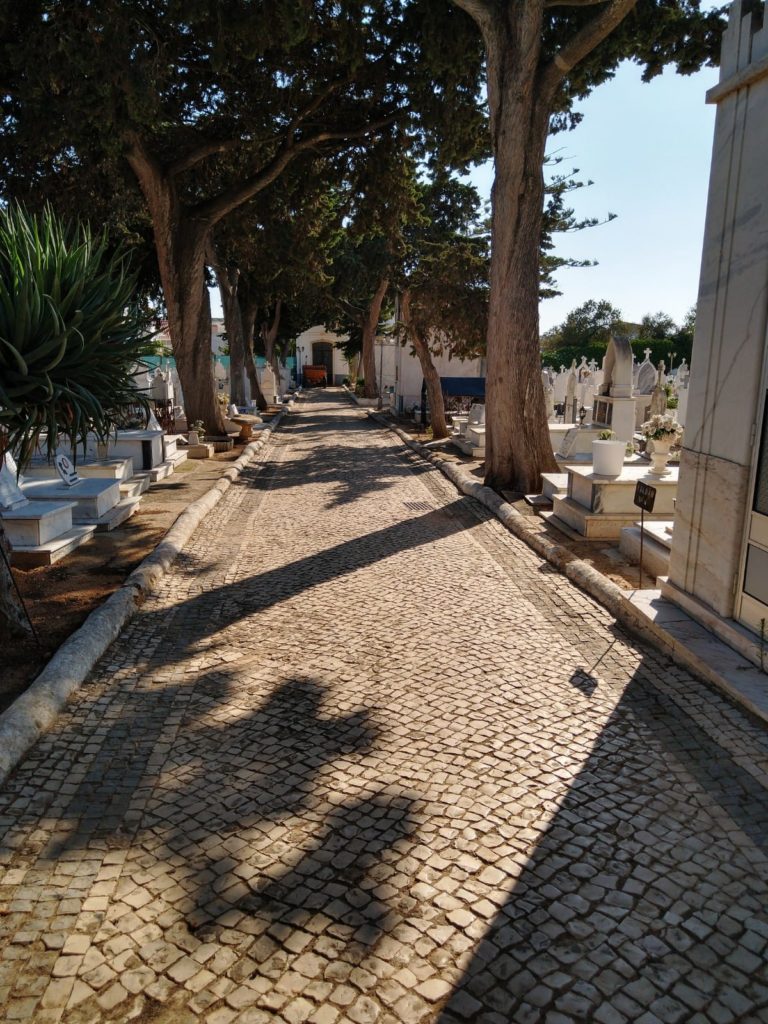
Not a particularly bright sight to see on holiday, however for us morbid souls there is a peacefulness of a graveyard. Certainly Mexico, and Dia de los Muertos, gave us a different aspect to cemetery life.
Cemiterio de Alvor, off course, was no match for the ghoulishly atmospheric, and ostentatious, Père Lachaise Cemetery in Paris, and no well known names; that we knew of, but it was worth a peep to see how the other side in Portugal do things!
Morabito de Sao Pedro
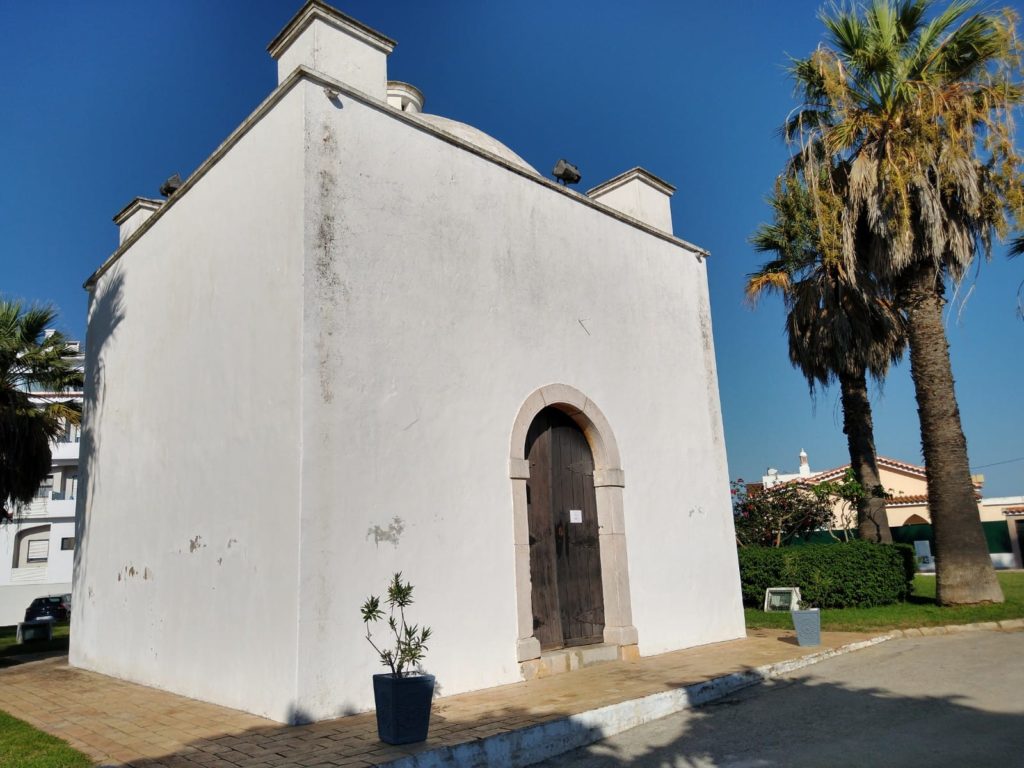
This simple whitewashed church is situated just right outside the Cemeterio De Alvor. Inside it has a very understated alter, but pretty nonetheless. The church is tiny and maybe would squeeze in 20/30 people all in all.
Igreja do Divino Salvador
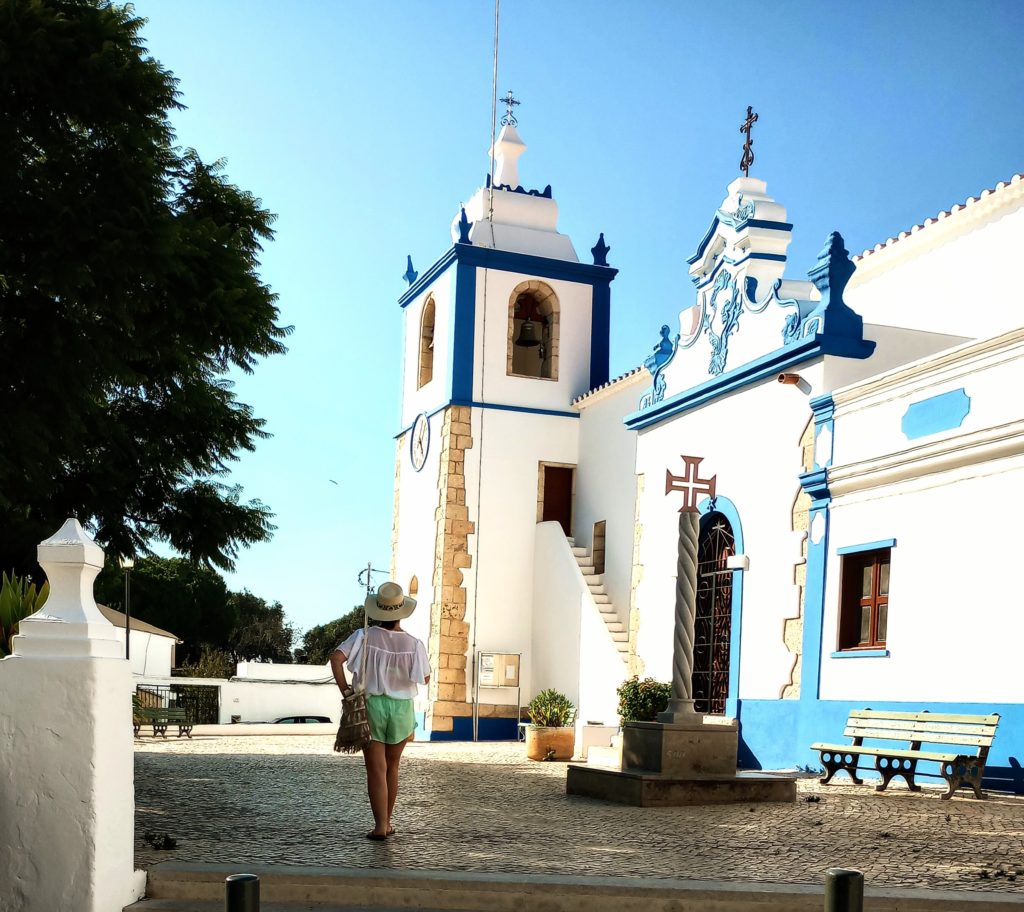
Walking down through the cobbled streets, from the understated Morabito de Sao Pedro building, to another church, Igreja do Divino Salvador, you will see many locals milling around. Deep in conversation or watching sports, tourists aren’t the only ones taking a sunny break in the Algarve. There are a few tiny bars along the way, where you can quench one’s thirst, rest those wandering feet, and take time out from the scorching sun.
The Church Bar
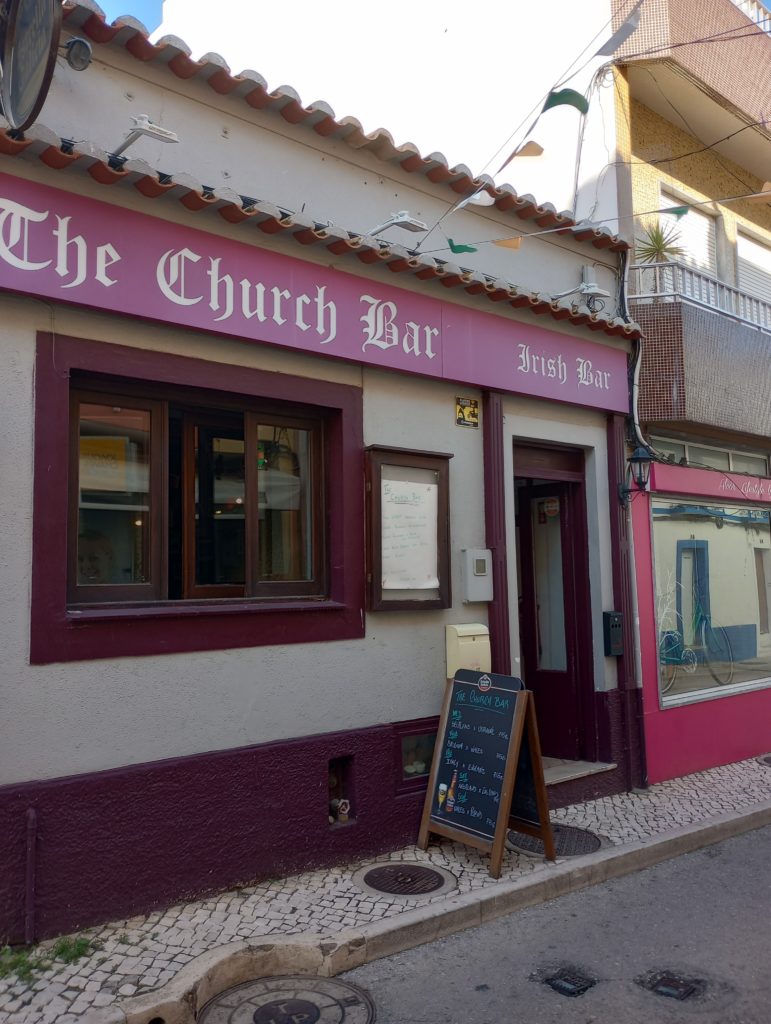
One such place was this wee hole in the wall. We popped into the Church bar after our stroll, owned by a Dubliner, and therefore adorned with Irish paraphernalia, quick quips and humorous odes, and walls shrined red in honour of his favourite football team, Liverpool FC. Of course, Knox was pleased about this and felt quite at home.
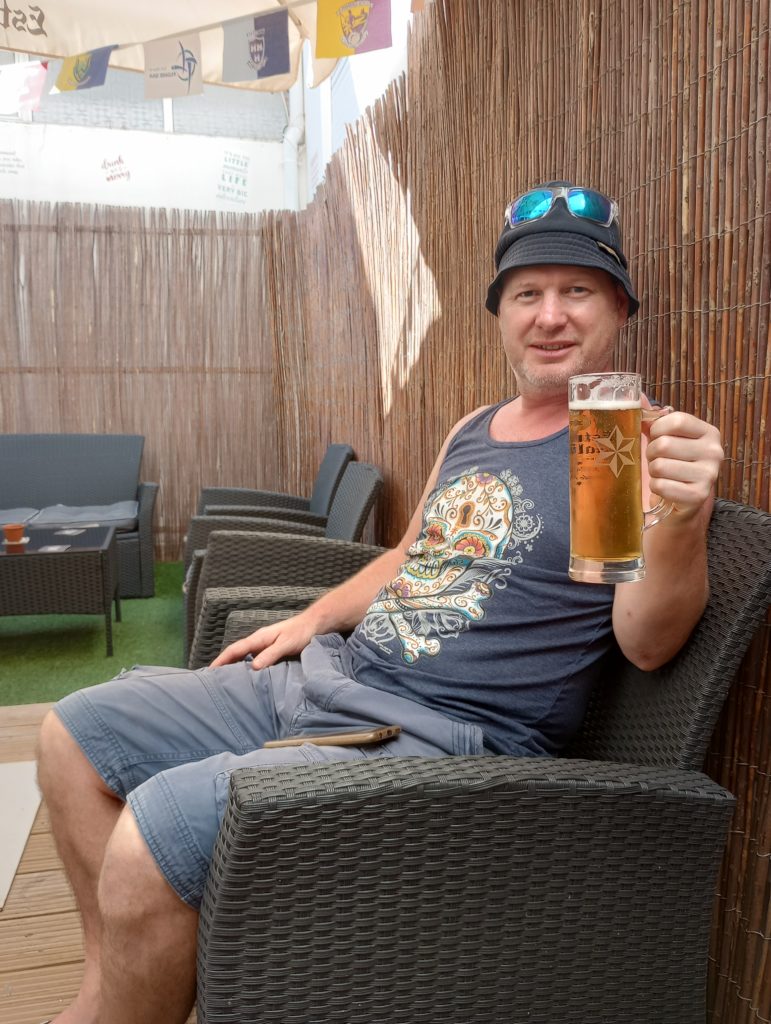
There’s a little area out the back, which is loosely called the beer garden. It was like sitting in someone’s back yard, but we loved the friendly atmosphere and unpretentiousness of it all.
Church of Misericordia of Alvor
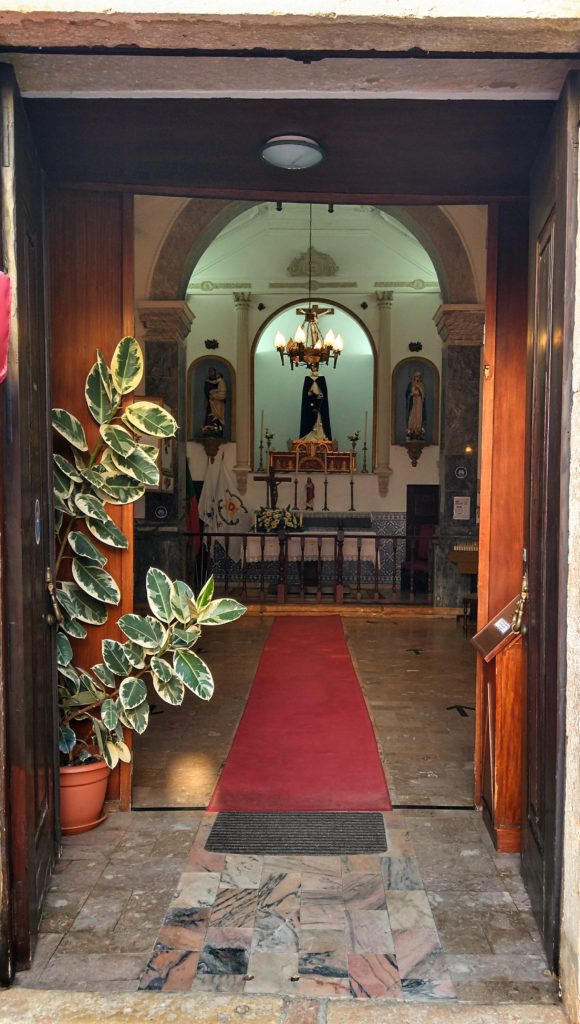
A picture postcard building, it shone brightly under the deep blue skies.
Alvor boardwalk
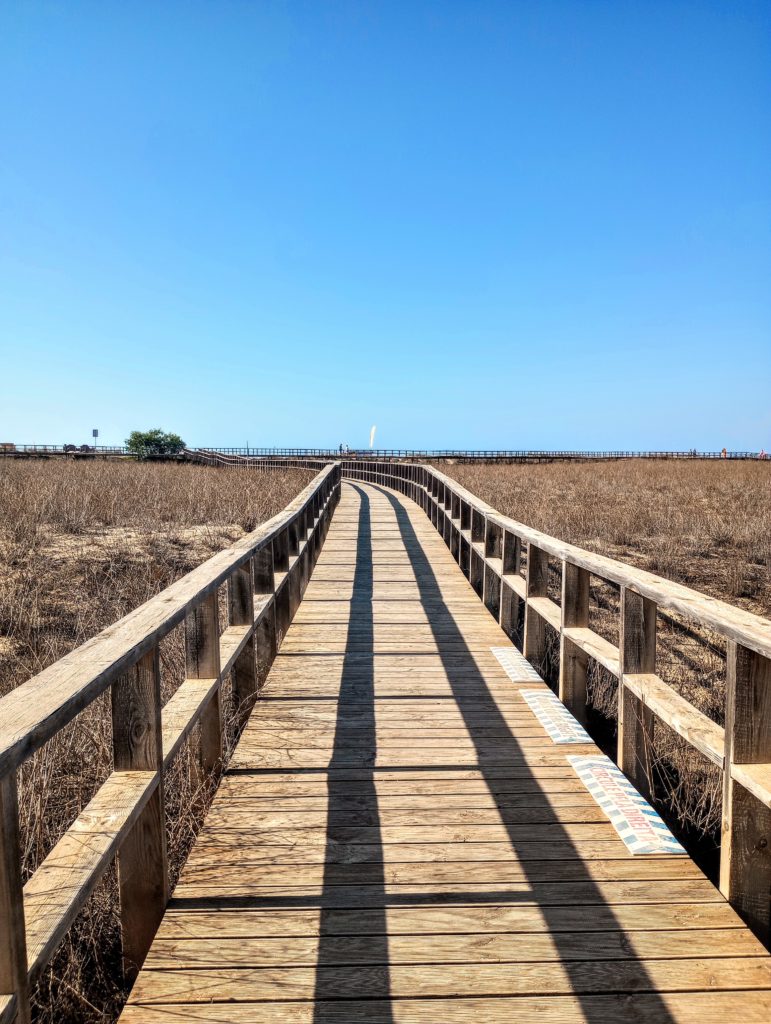
The wooden path stretches for miles and crosses the wetlands of the Ria de Alvor Nature Reserve, running alongside the beach, lagoons and estuaries. It was only a couple of minutes from our apt. The surrounding area looked quite brown and dry and very different from the “wetland” description.
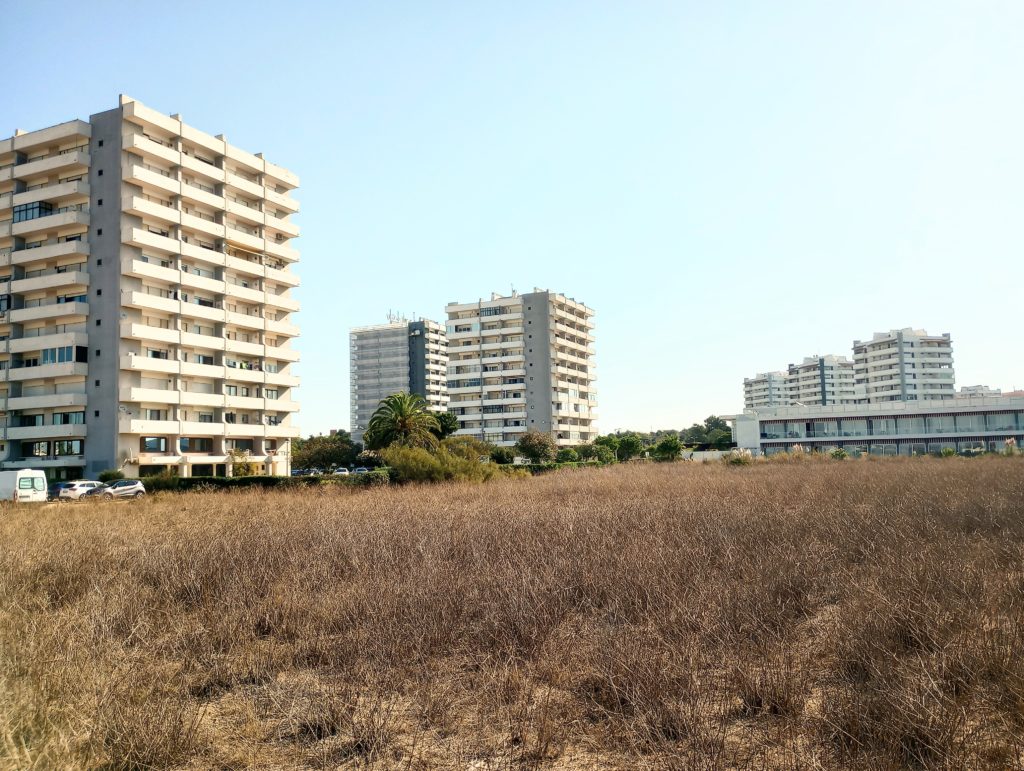
Lots of people jog or stroll along here to spot birds or simply to make their way to a sunbed on the beach.
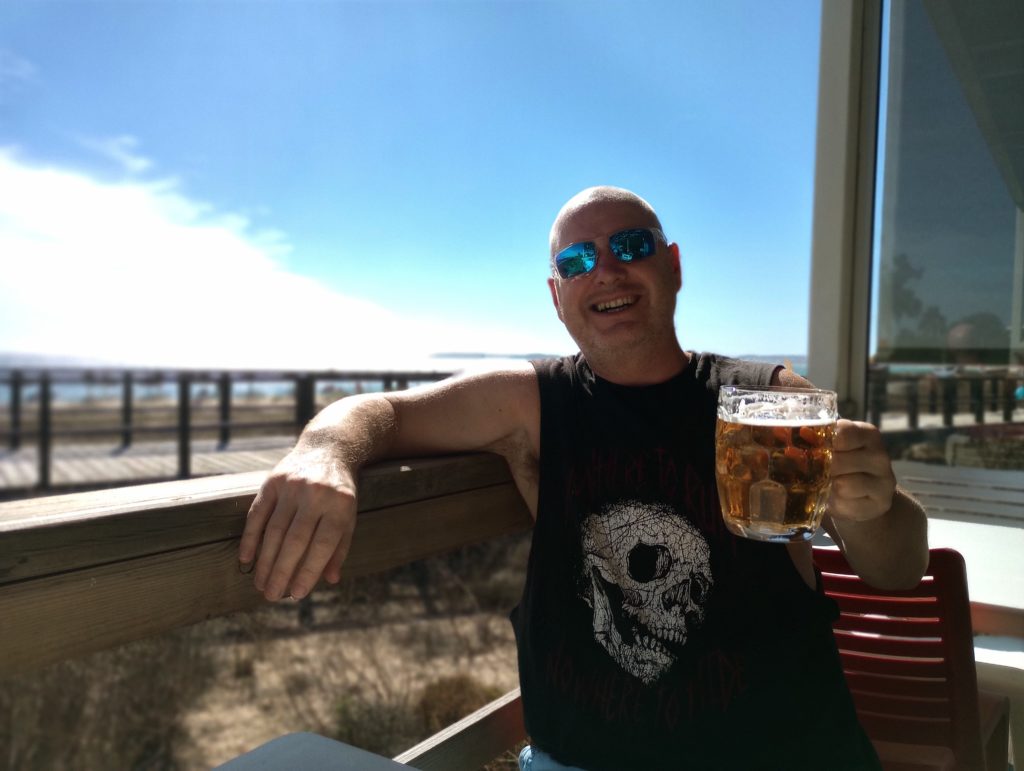
Just off some areas of the boardwalk you will also find cafes and restaurants. One of our favourites was the Seadeck Restaurant. Ocean facing, it had a relaxing vibe and friendly service.
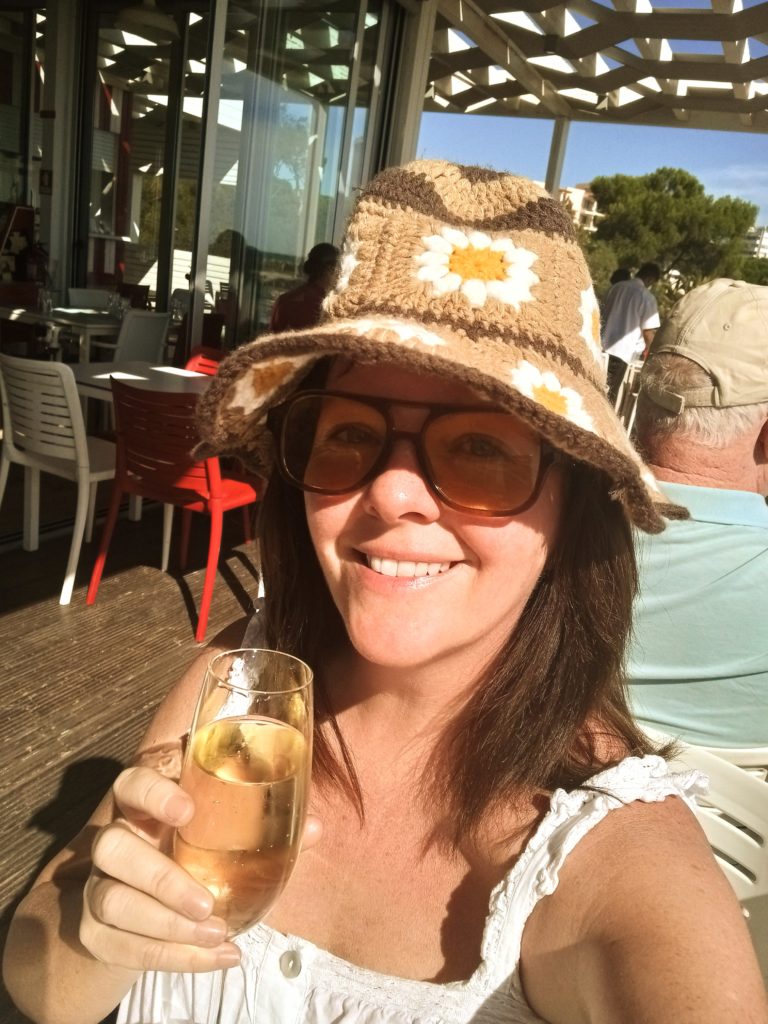
Alvor beach
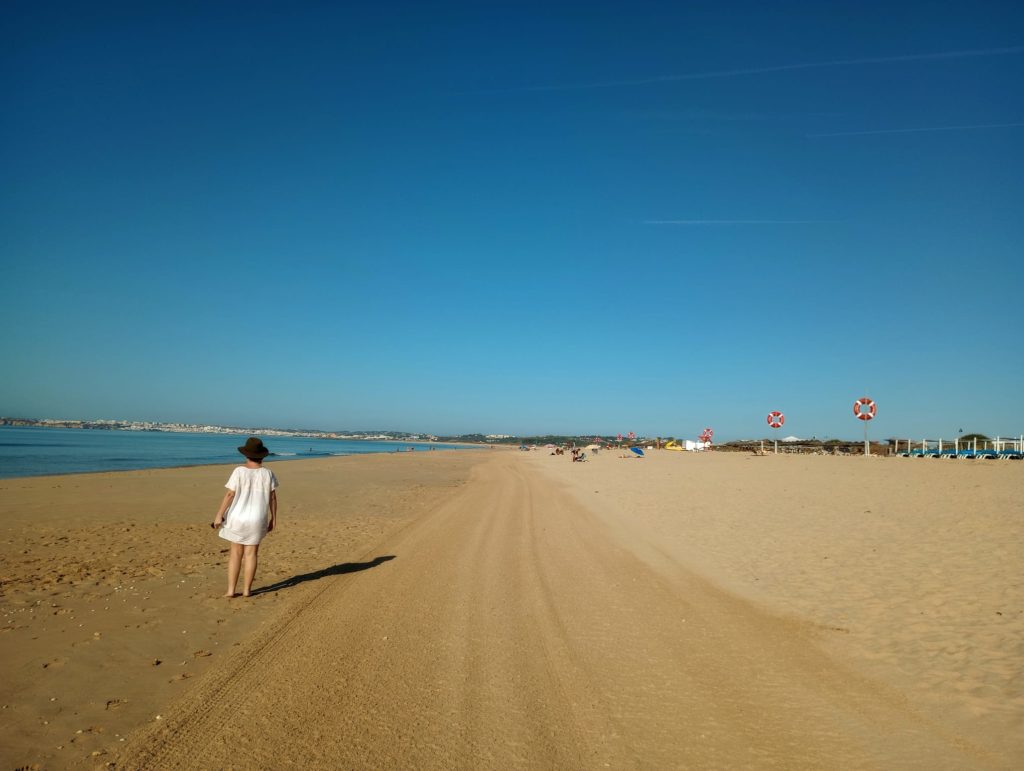
Alvor has Several kilometres of the finest golden sands and forms an immense natural bay with views across to neighbouring Lagos. If only there weren’t so many darn sunbeds which take up the length of the beach. Nonetheless, it was a decent spot for a sunny break in the Algarve.
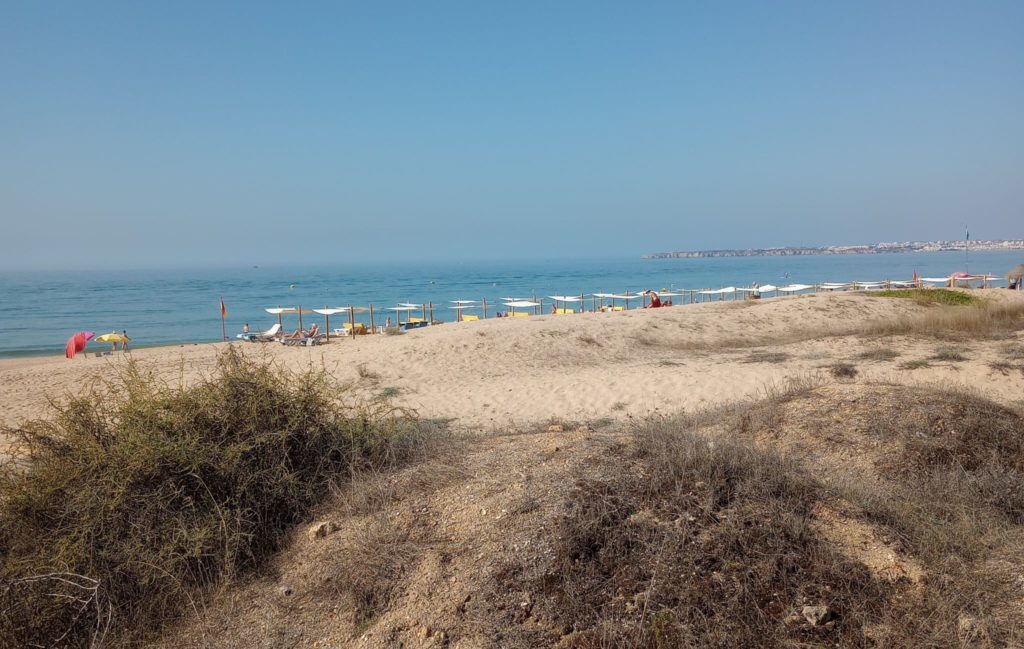
Praia Dos Três Irmãos

At the East end of Alvor, lie the rock formations that adorn Praia Dos Três Irmãos. The Sandstone cliffs, which are a prominent feature of this coastline, offer a craggy adventure as one dives into caves, under arches, and along the rugged coastline to find little havens to chill at.
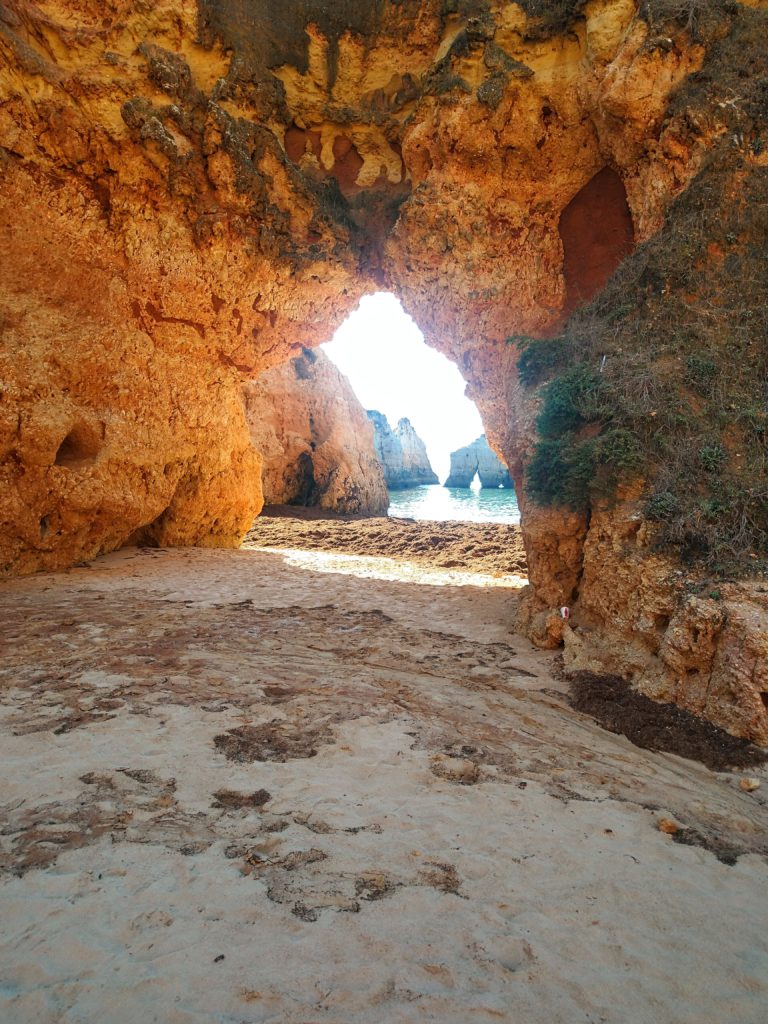
Praia Do Submarino
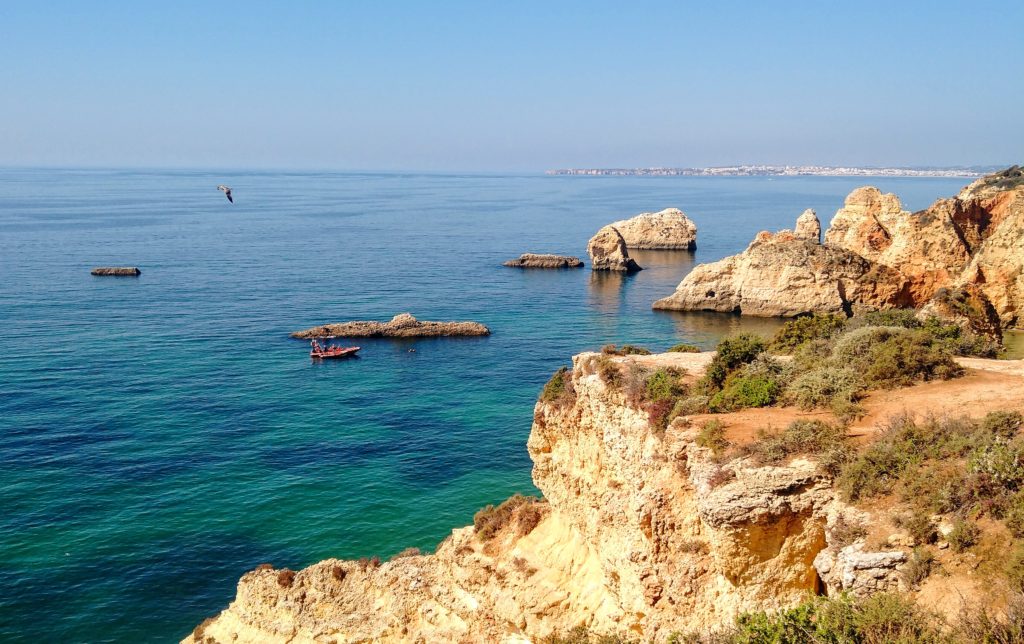
To find this ‘secret’ beach it will take a bit of a hike to get there, with a difficult bit of scrambling to reach the cove from the high cliff. Maybe best to get a boat to take you. One of the rock formations in the sea, looking like a submarine, gives the cove it’s name.
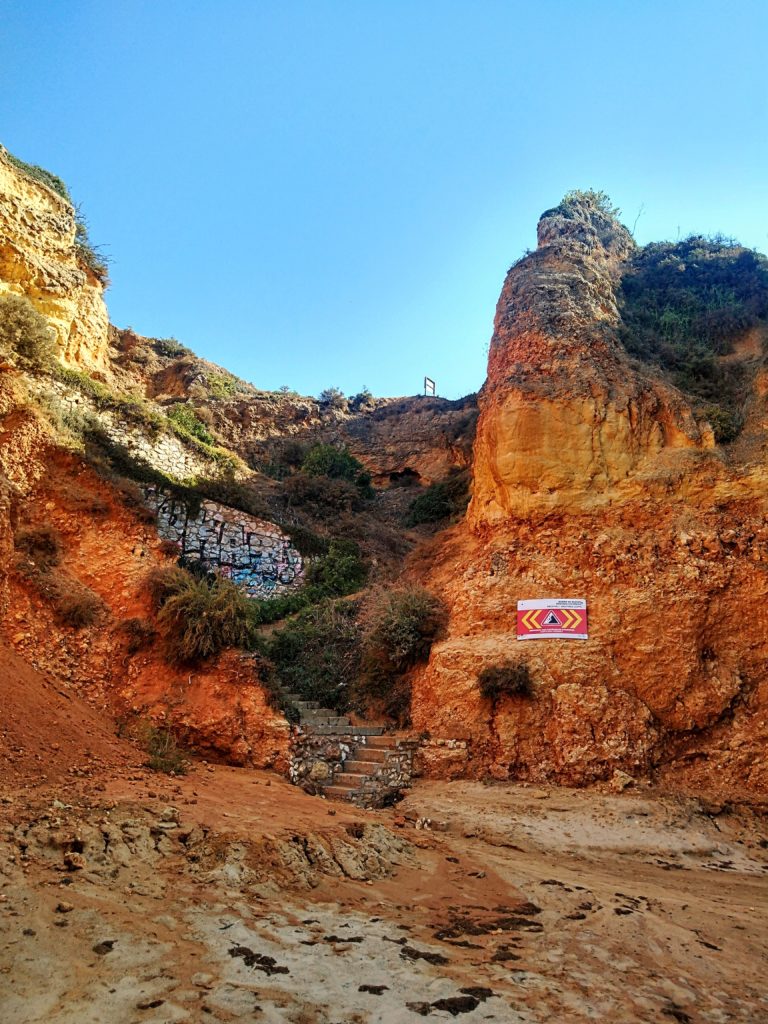
Secluded and with Rocky arches and caves, the area is great to explore. On the way you will pass other coves that have a trickle of tourists heading that way. We thought the Caribbean was mad for it’s Sargassum, but the build up of seaweed on some of the coves, like Praia da Prainha, absolutely covered the sand basically to the sea. Indeed, this made it an impractical bathing spot.
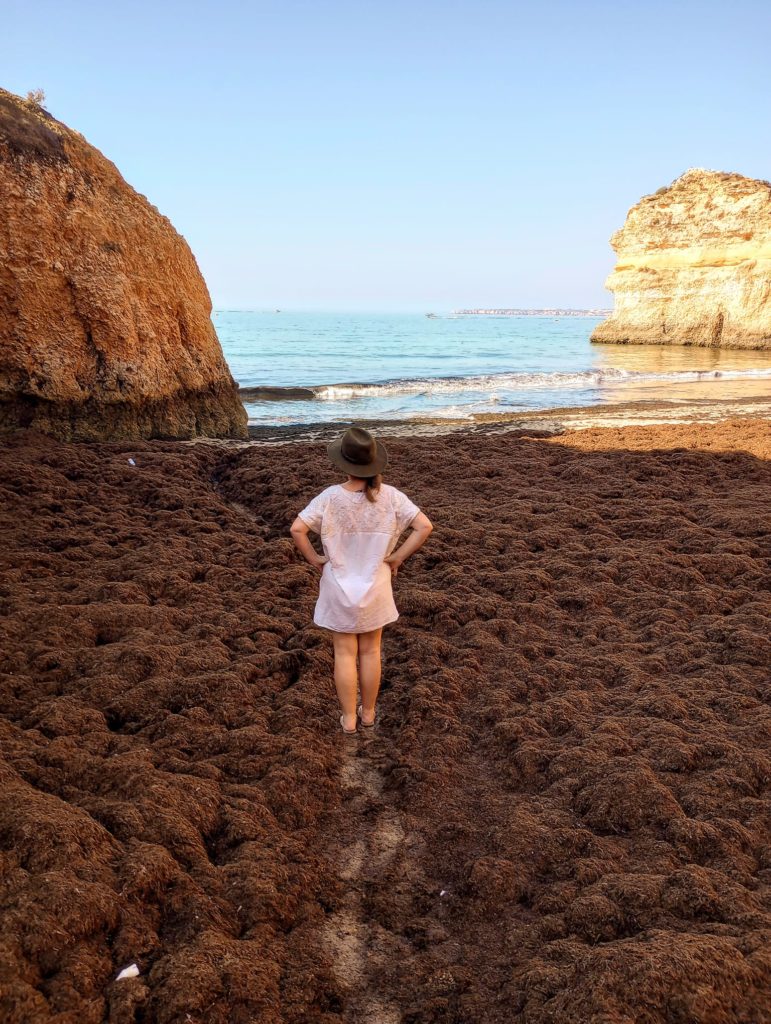
Praia Do Submarino will be like your own private paradise if you get it all to yourself, however many people are hearing about it, so it won’t be long before its not so serene! If you don’t want to risk a twisted ankle climbing down the cliffs, you still will not be disappointed you’ve made the trek here, as the views are outstanding. Our only gripe is that we didn’t go back at sunset!
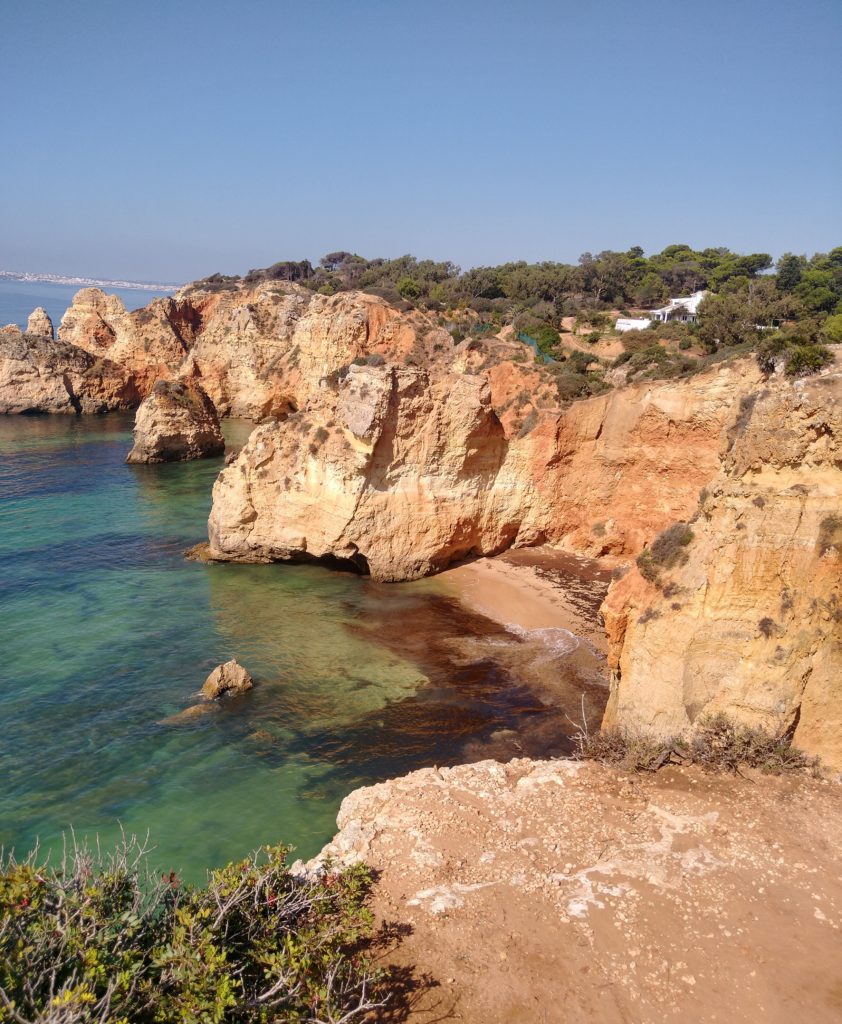
Ria de Alvor Nature Reserve
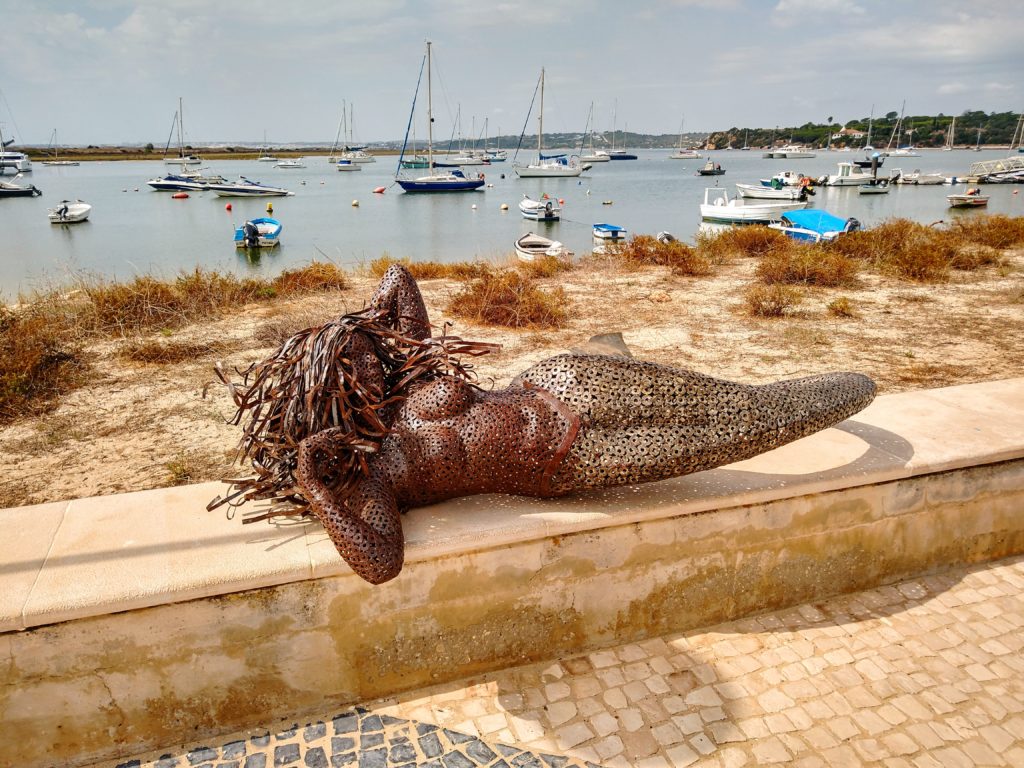
Around spring and autumn the estuary of the river becomes a staging point for thousands of migrating birds. The estuarine ecosystem is also supports numerous small animals, plants and insects. The area is protected by the RAMSAR Convention, designating it as a wetland of international importance. You can walk the stretch for miles around here and relax around the fishing boats that dot the banks of the river.
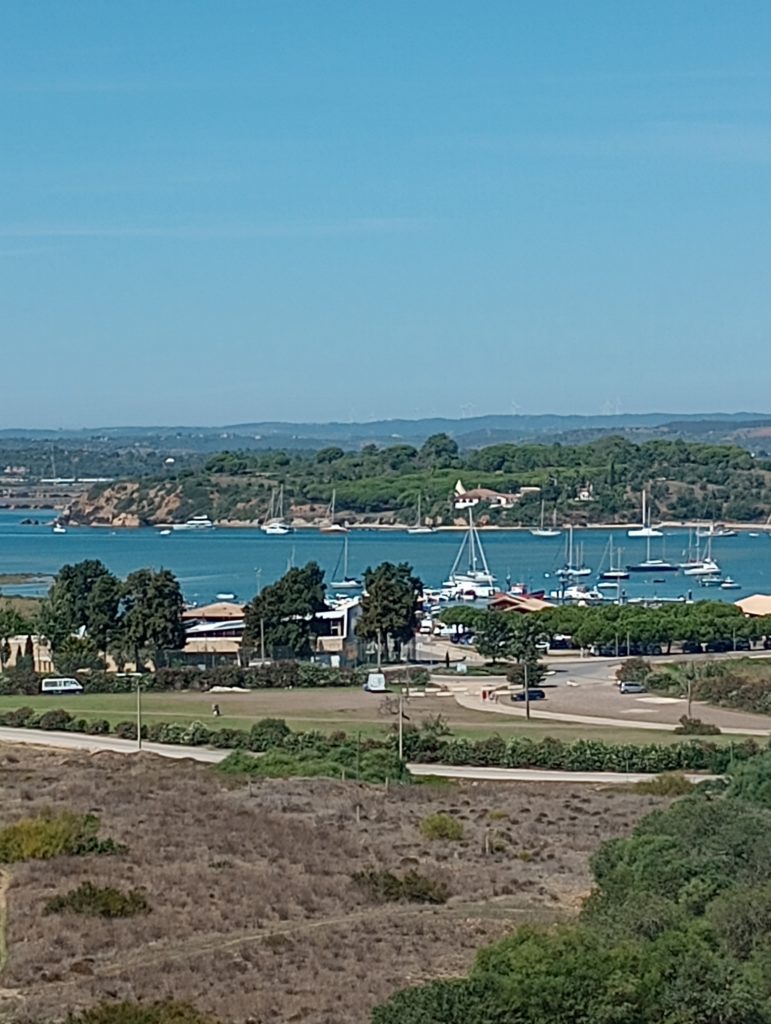
Eating / drinking / Shopping
As well as the Church bar and Seadeck above, we ate and drank in a few other establishments which are worth a mention.
Pizzeria La Piazza
Italian food is often on the menu and Pizzeria La Piazza hit the spot.
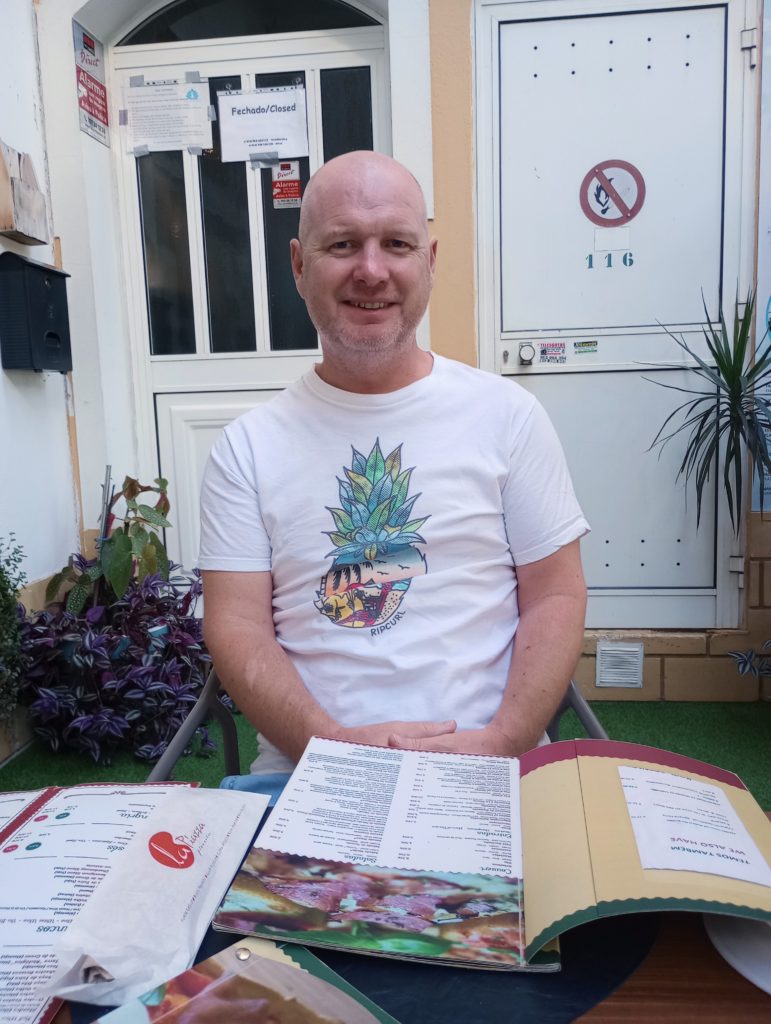
Lovely little place with excellent Food and service. As well as eating inside we also had a few takeaway pizzas. And, of course, as a tradition, the Limoncello came out for dessert!
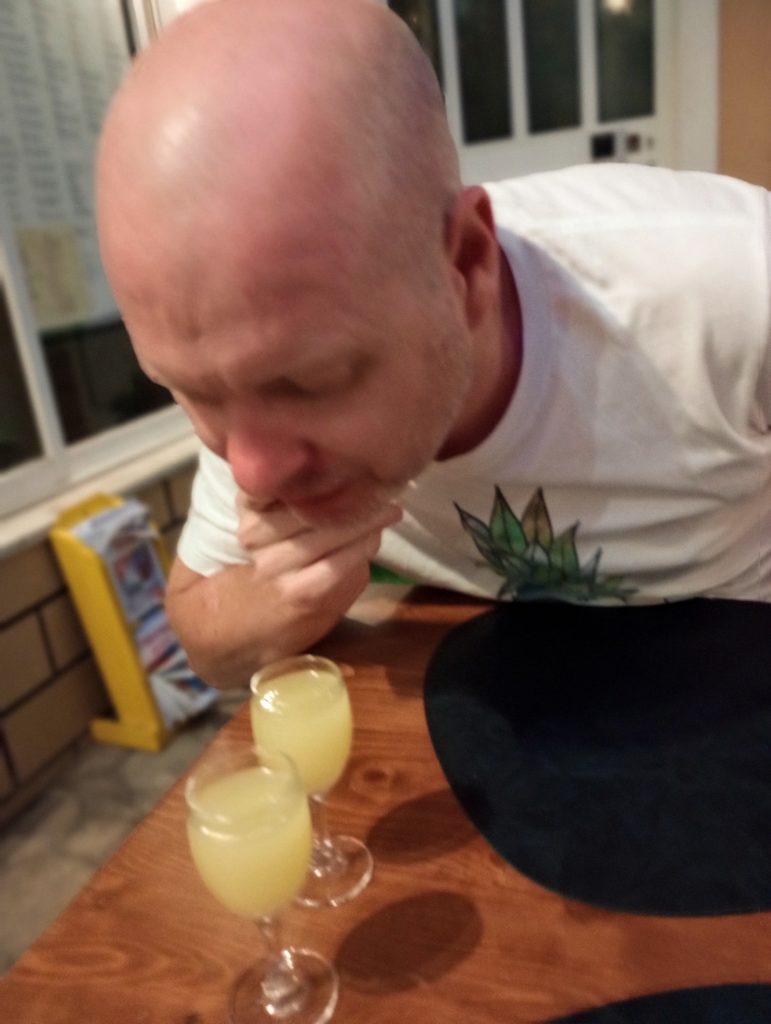
Namaste Indian restaurant
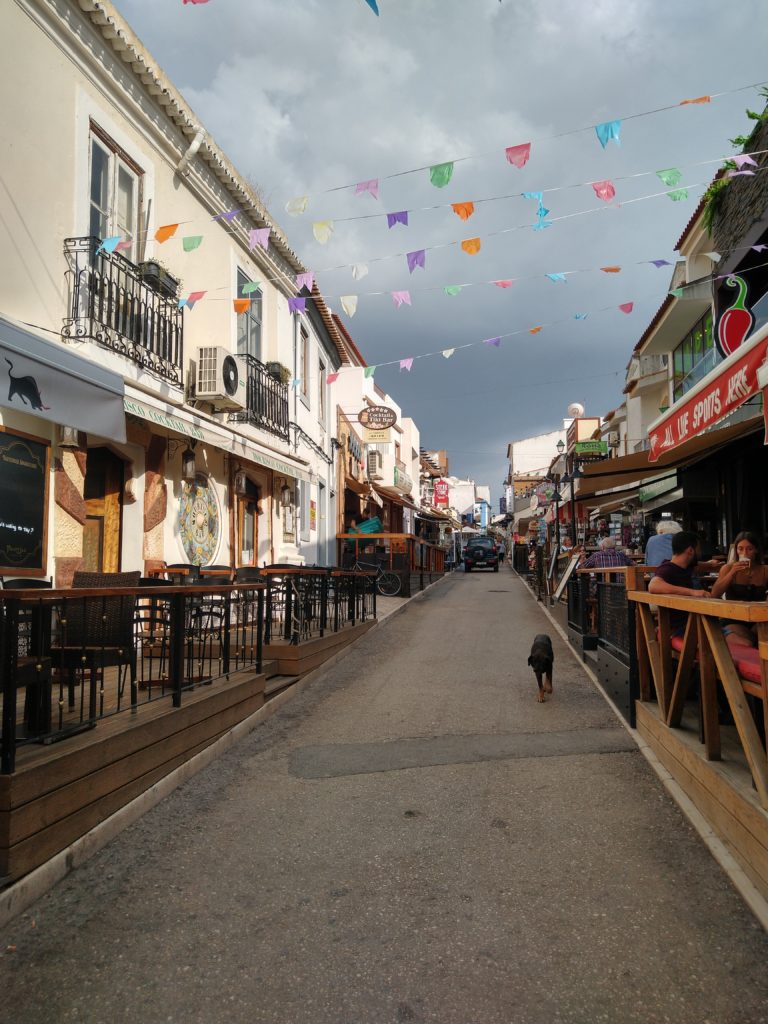
Here was a nice little place on Rui Frederico Ramos Mendes. A tasty curry was had that went down well after a few afternoon bevies at the wee local bar opposite.
Tony’s Place (Bar facing Indian)
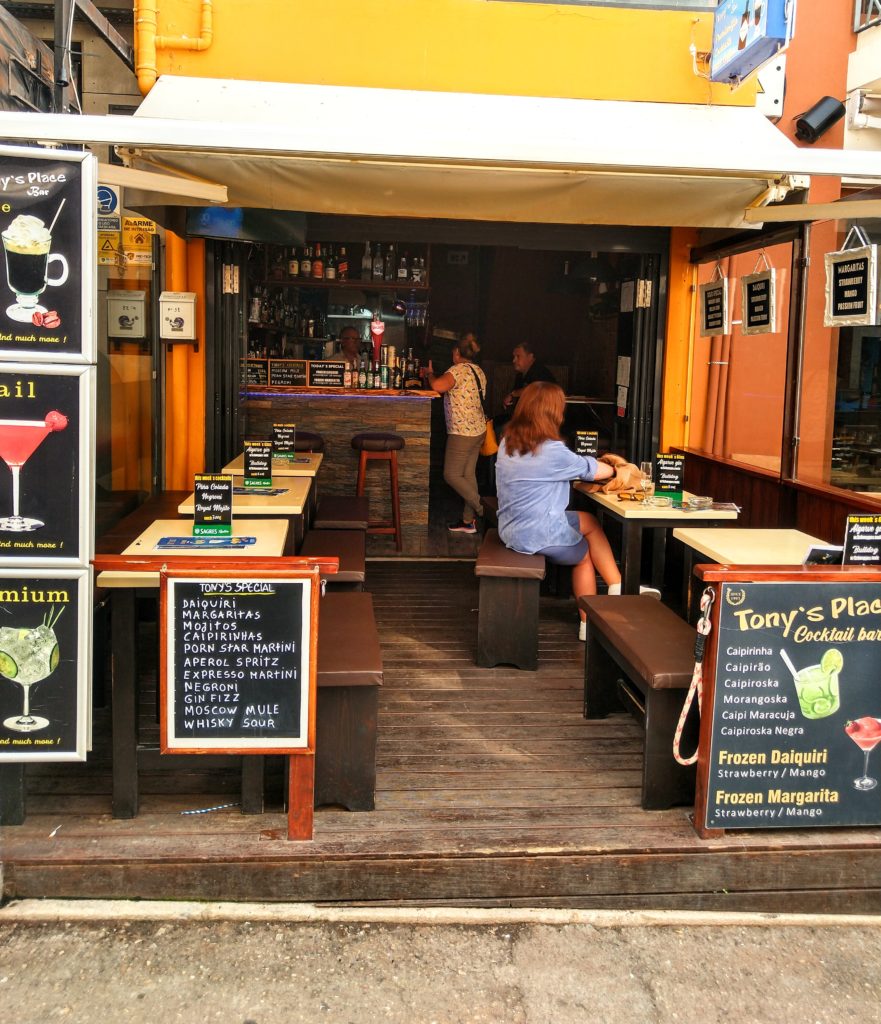
A nice little locally owned bar were the drinks flowed on our first afternoon in Alvor. A great way to start our sunny break in the Algarve.
Irish bars
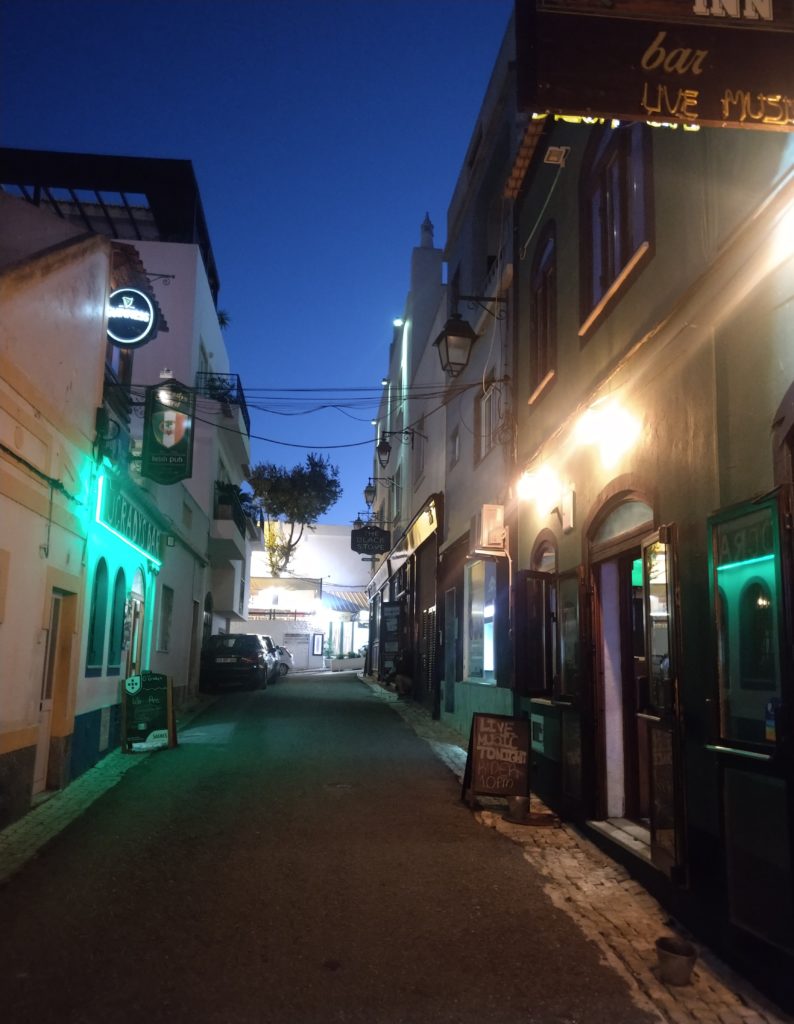
There are quite a number of Irish Bars in this part of the globe. It would be rude not to frequent one or two. As you may have noted above, we snuck into the Church Bar, for our sins, but we also paid respects to O’Grady’s, the Black stove, and the Irish Inn. A hail Mary, a few beverages, a wee jig, and a bit of jovial mayhem righted everything with the world.
Moving on
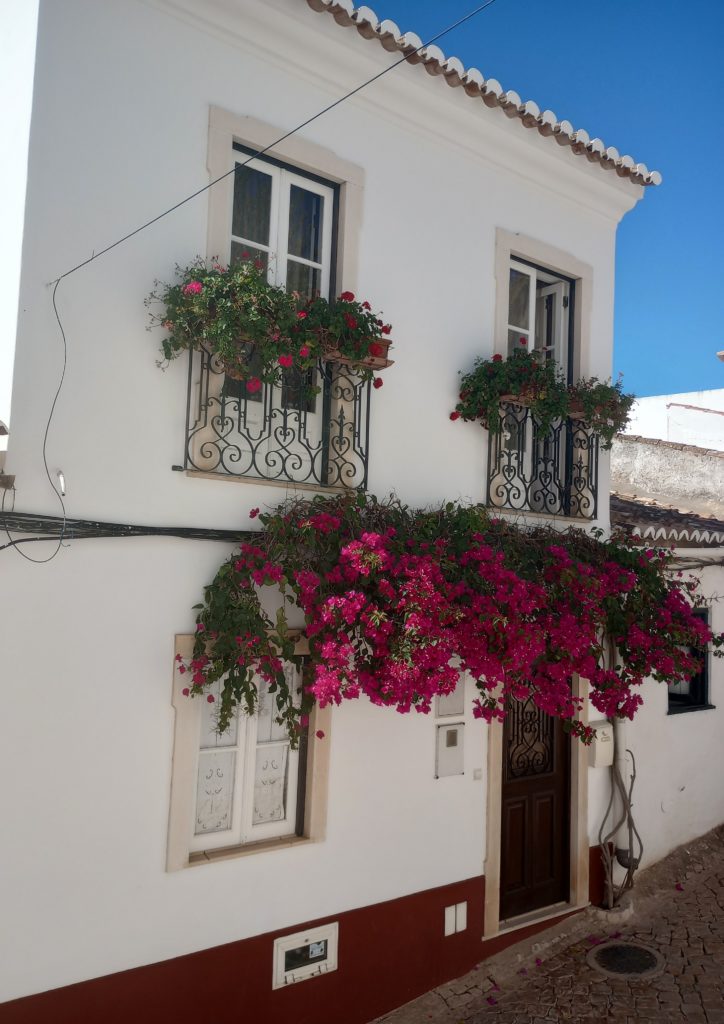
Since we aren’t the type to lay idle on the beach for more than an hour, we wanted to explore the Algarve more, especially since it was our first time visiting. Thus makes trips the most memorable, especially when you have a car. Road trips are always good for the soul.
Lagos
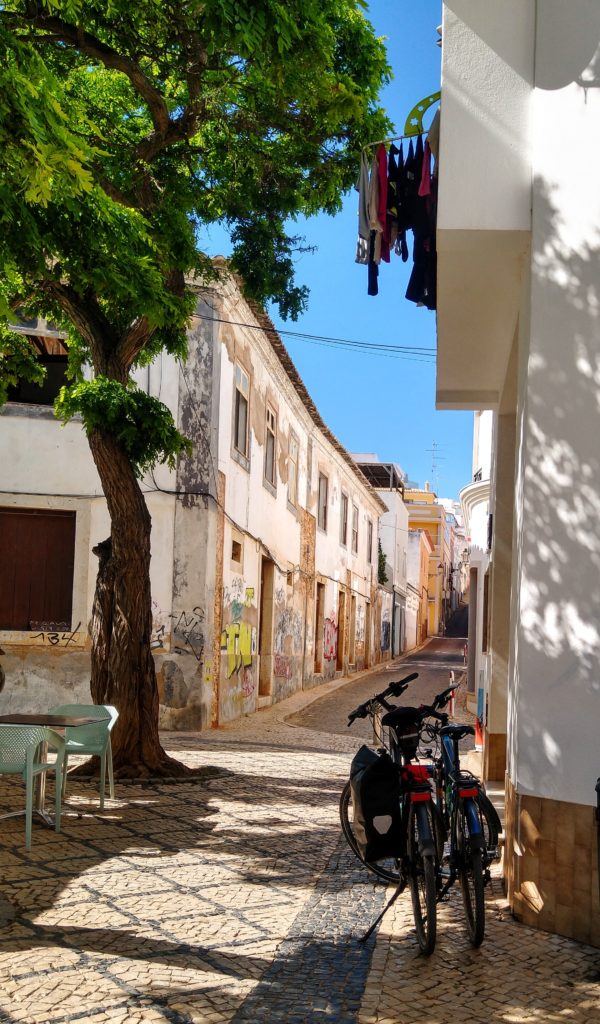
The city of Lagos sounded a great place to start. It sits on the the mouth of Bensafrim River and along the Atlantic Ocean, in the Barlavento region of the Algarve, in southern Portugal. Like always, we had a list of the places we wanted to see.
Ponta da Piedade
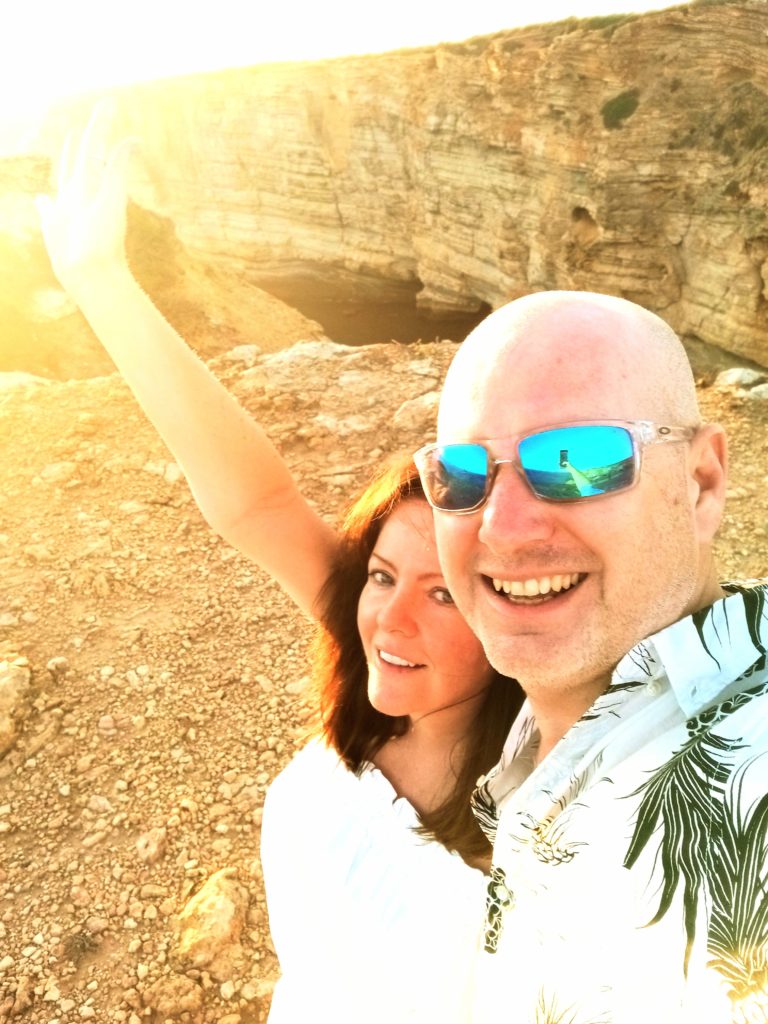
Ponta da Piedade is a must stop.
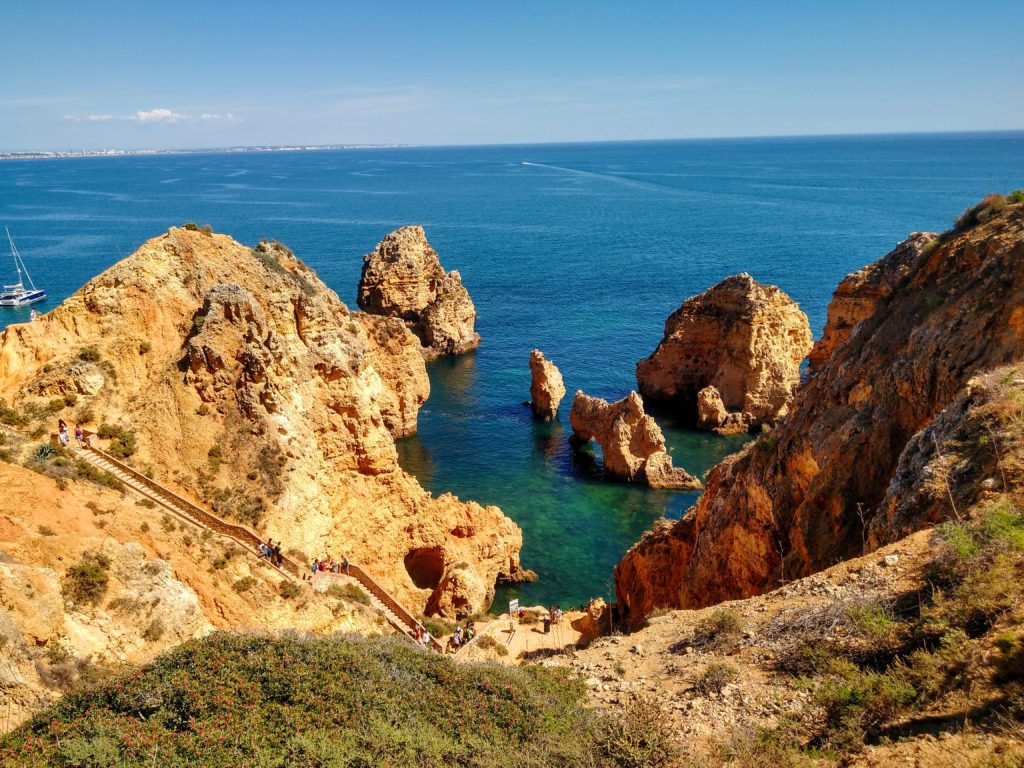
The rock formations of yellow-gold, sandstone cliffs, which sprut up to 20 meters high group along the coastline of the town of Lagos is just stunning.
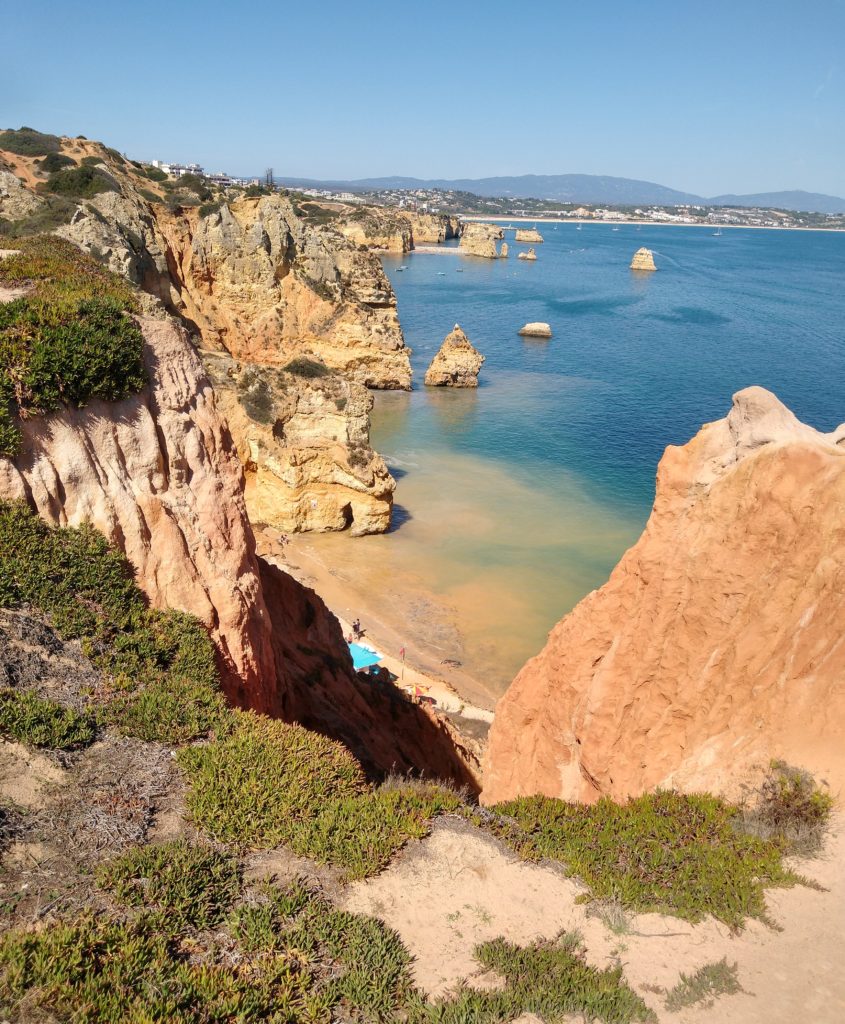
You will be amazed at the views whether its sunset, sunrise or anything inbetween.
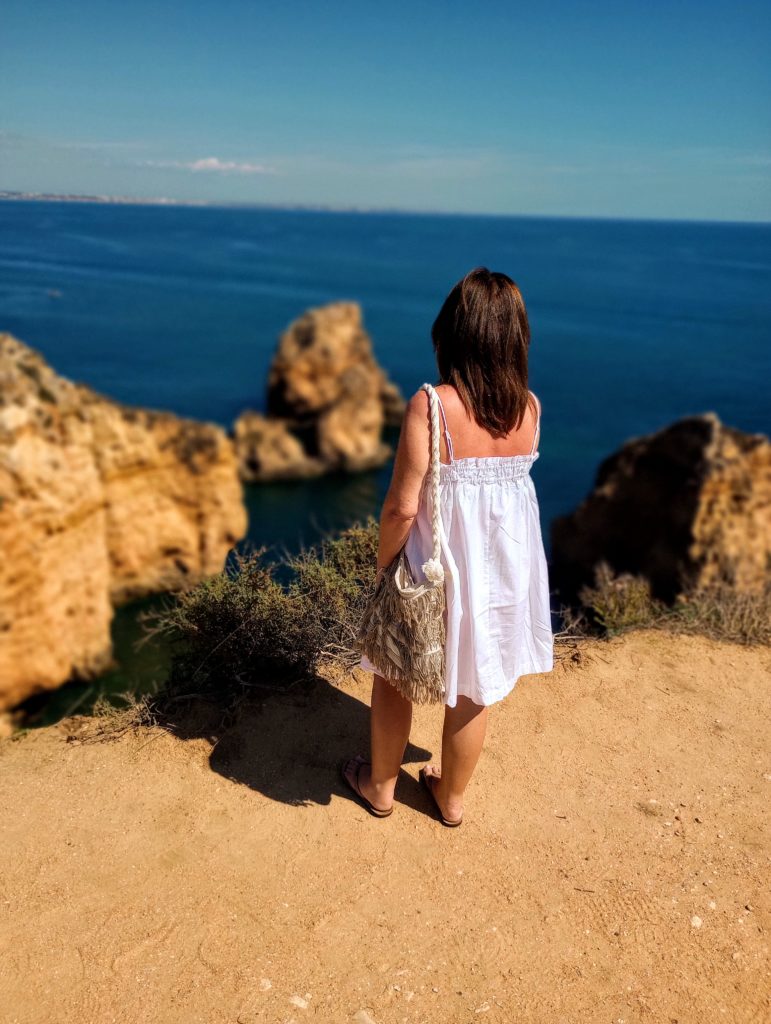
It was definitely one of our top 3 outstanding attractions to see in the Algarve.
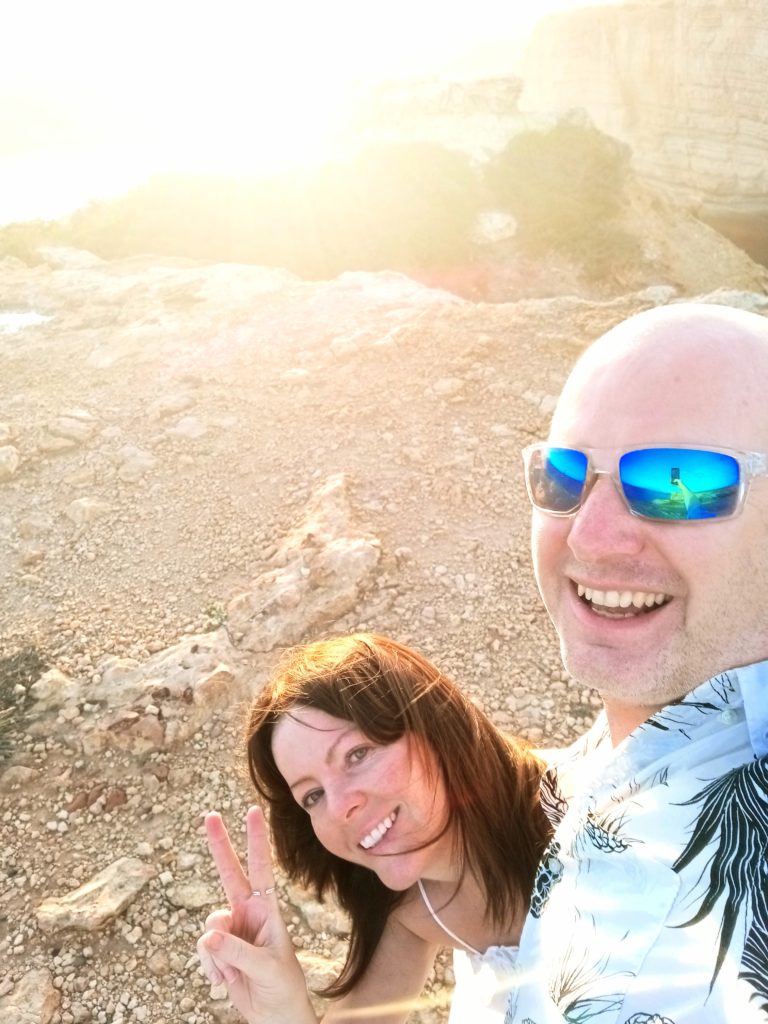
There are also less busier cliff tops close by, where you can escape the crowds for a more private viewing session.
Praia do Camilo
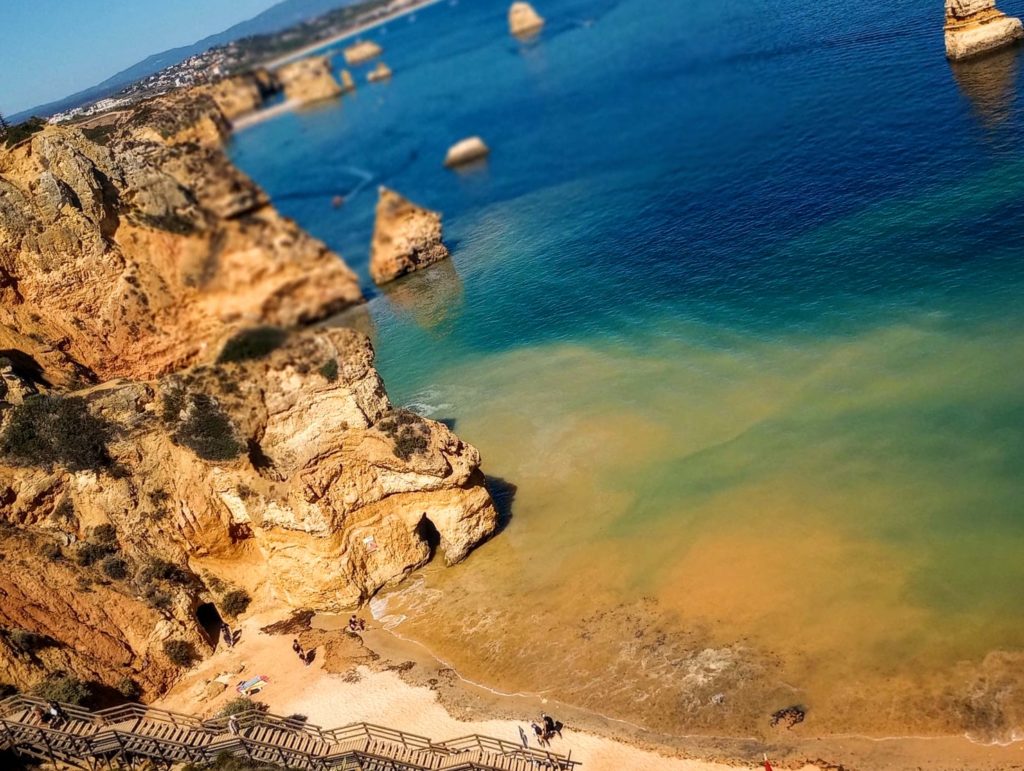
A pretty sheltered beach which you access down a long staircase. Bring water with you or else climb the staircase to the top again! This beach looks small from the top, but once down, you can go through a tunnel where the beach opens up more.
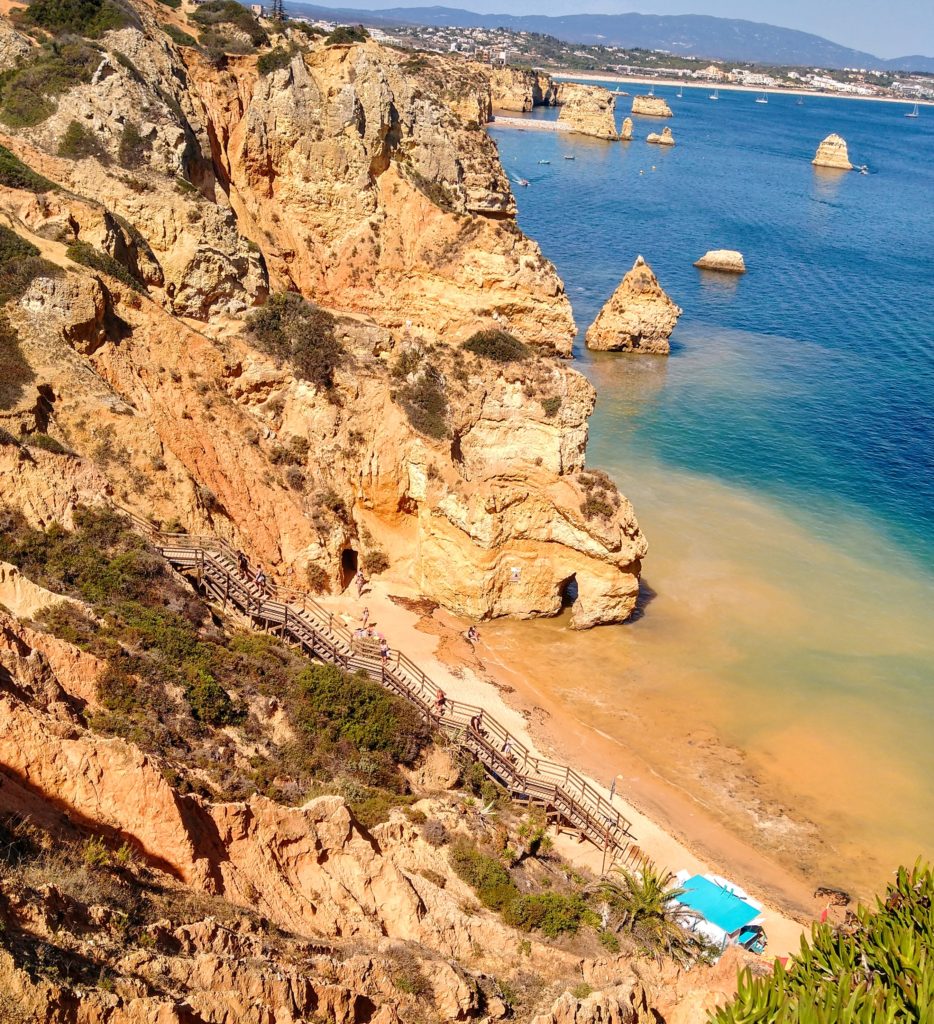
Old Lagos
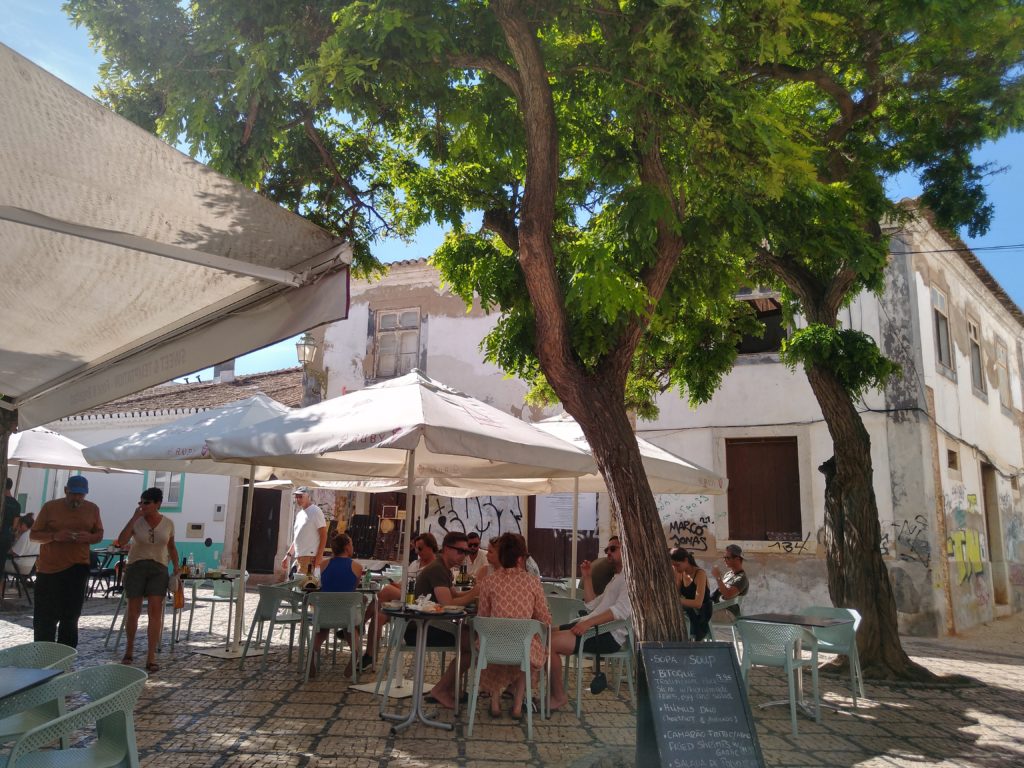
Interestingly, this Lagos was not once the capital of Nigeria! With a population of 22,000, swelling dramatically during the tourist season, it is a tad smaller than the 15mil crowds of it’s namesake in Africa. The town has over 2,000 years of fascinating history, with its ancient walls still intact. In the 15th century, Prince Henry made it his headquarters during the Portuguese Age of Discovery. Many ships departed to map the coast of Africa in the hope of finding a route to Asia. Prince Henry’s statue now faces the harbor, in a square where Europe’s first slave market still stands. Outside the wall and rich history of Lagos, there is also now a modern feel, where tourists and locals come to fill the beaches, museums, restaurants and nightclubs bringing it alive.
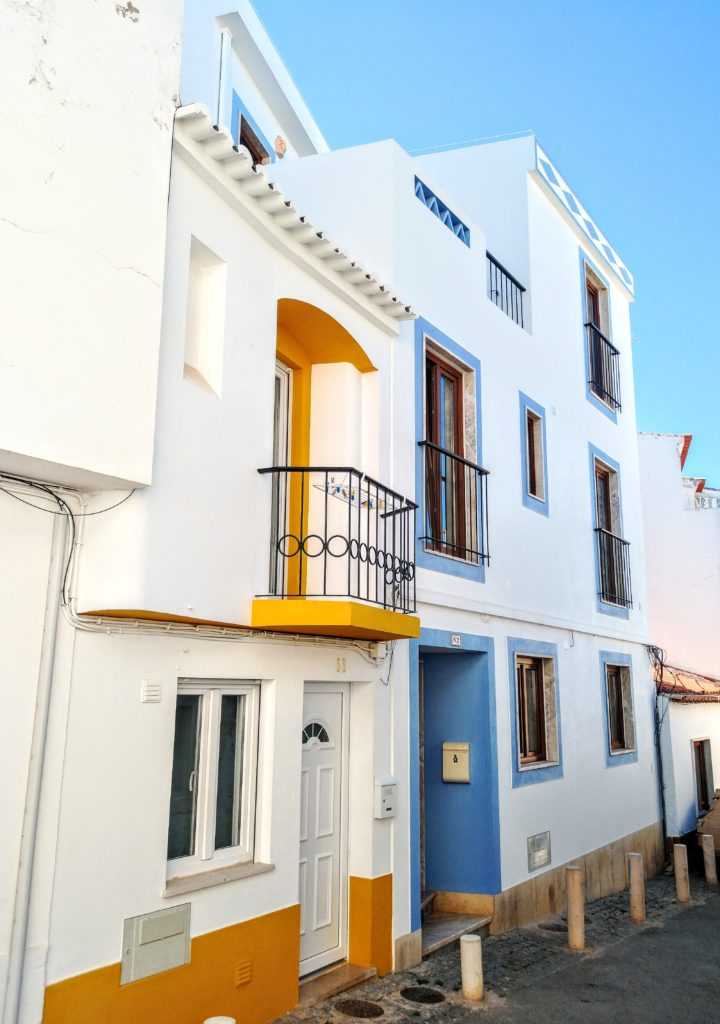
Lagos castle
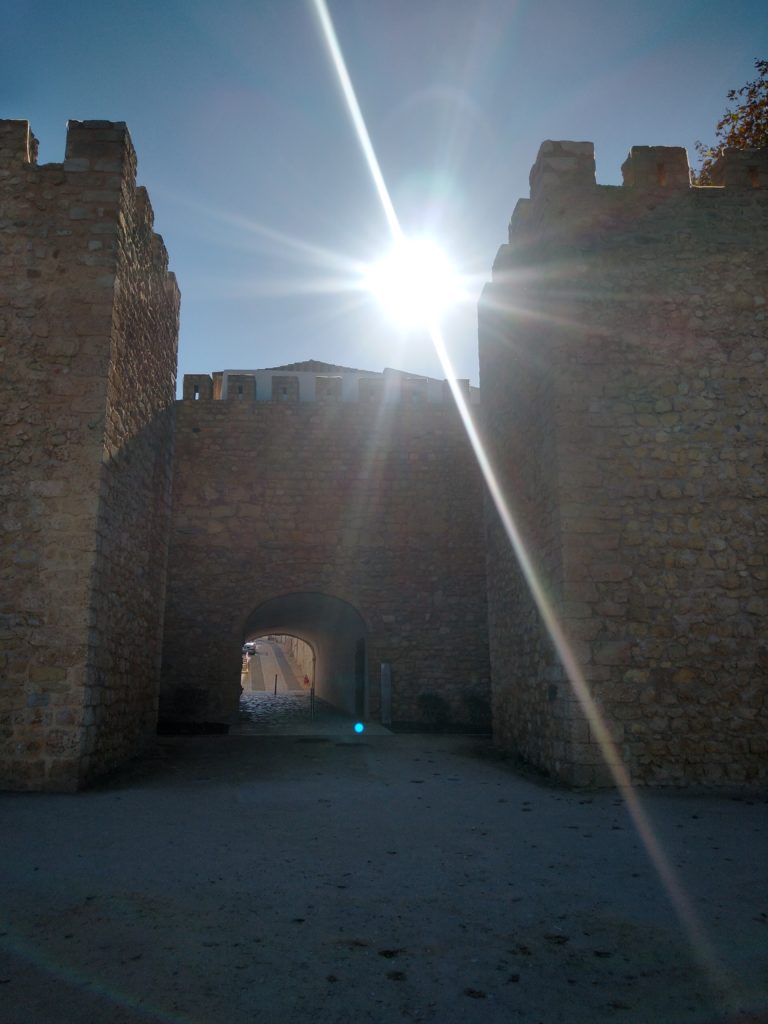
The medieval castle defensive walls surround the entire city of Lagos.
Igreja de Santo António
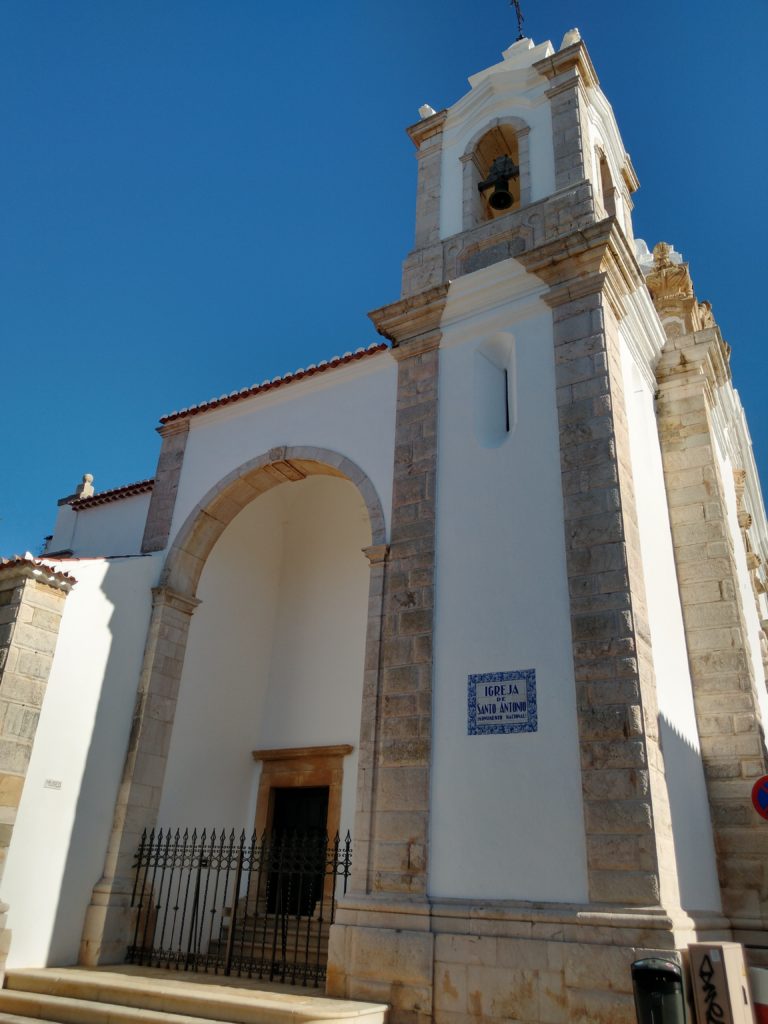
The baroque style architecture of the church is seen as one of the best in the Algarve. It was originally constructed in 1707, the church was rebuilt in 1769. The interior is certainly lavish, with the walls covered in 18th century blue and white azulejo panels. The entire church is crowned by a wooden vaulted ceiling.
Lagos Roman bridge
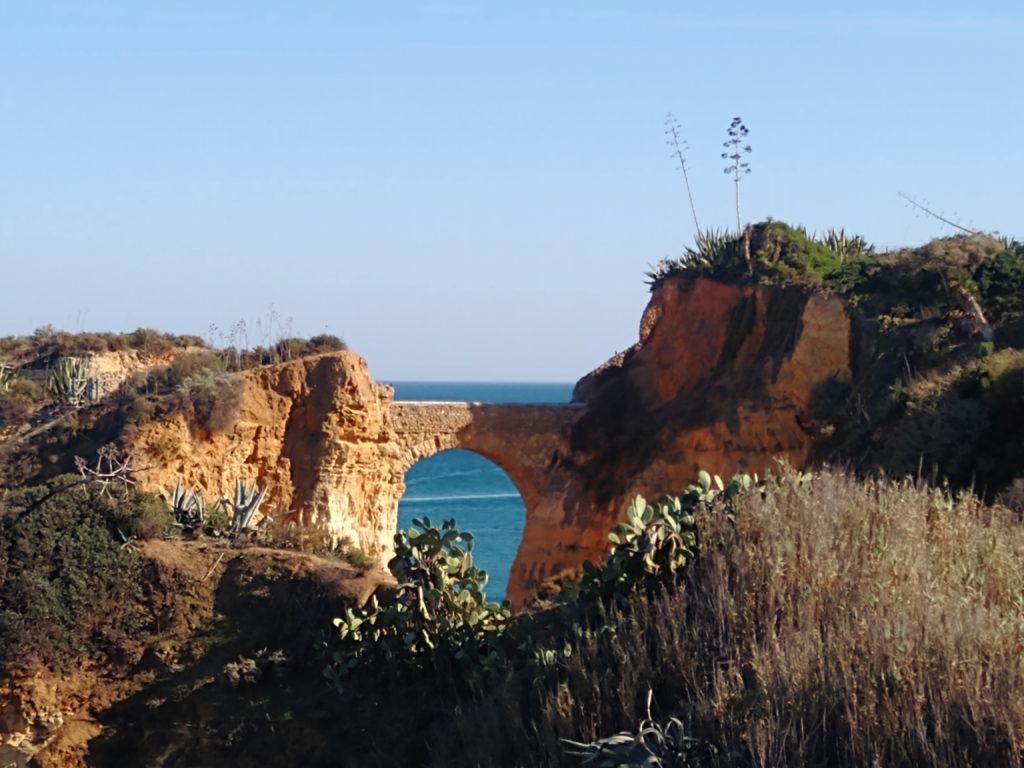
The Roman bridge is a prominent structure and you won’t miss it while exploring the beautiful coastline. There are little coves where you can bask in the glorious sunshine amidst the charming nature and architecture.
Lagos Marina
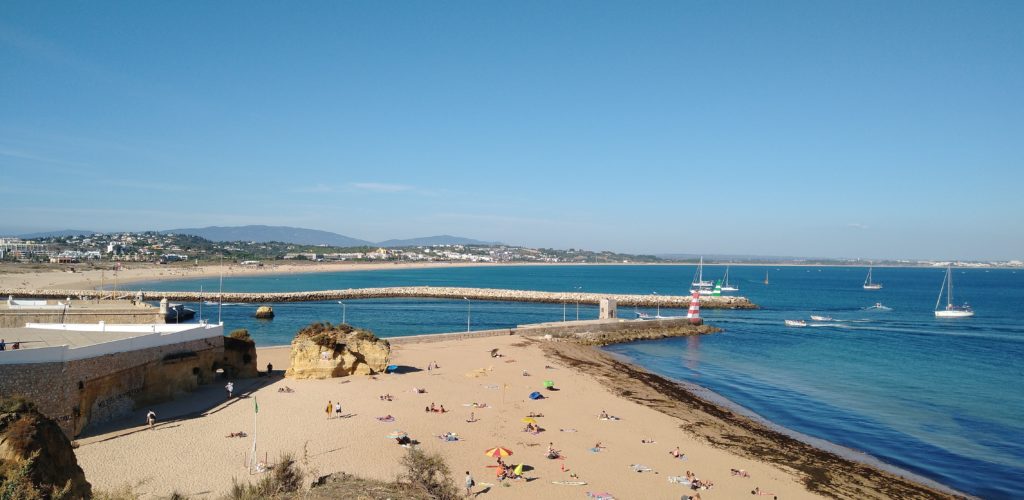
The marina is relatively new and was only opened in 1994. Since then boats from all over the world have sailed in. As you can imagine it is an ultra modern development, with fancy restaurants, hotels and cafes. Its definitely worth a stroll and a photo op.
Forte da Ponta da Bandeira
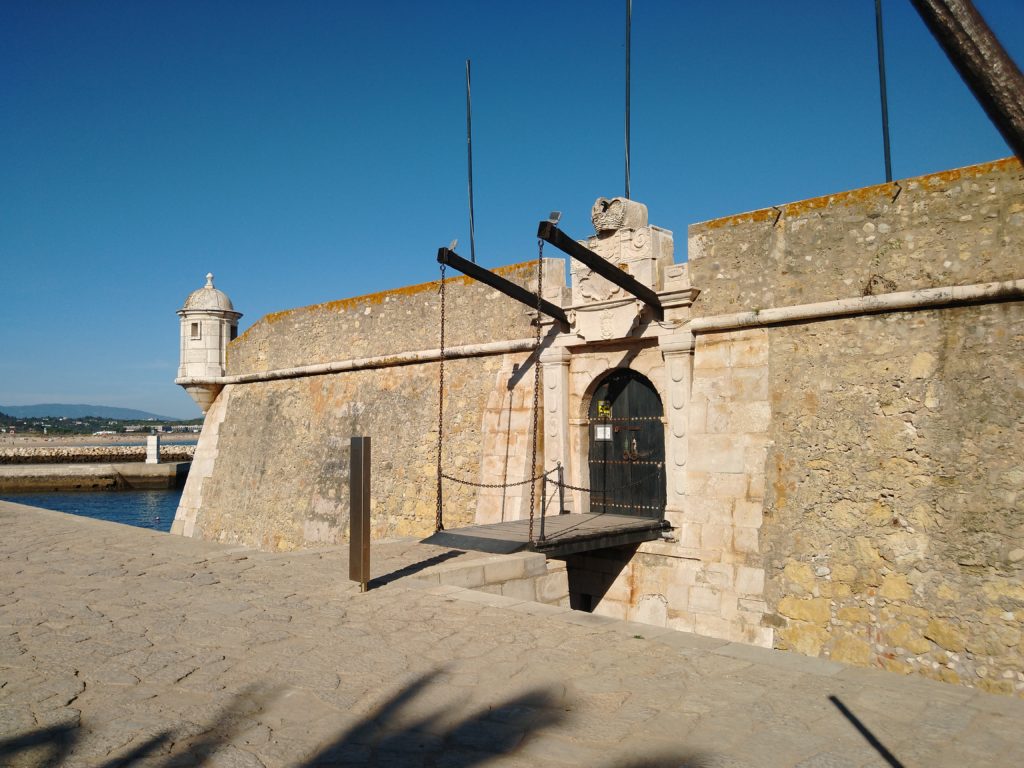
Located at the end of the historic center of Lagos, this fortification defended the city from attacks in the Middle Ages. In the 1600´s the coast was under regular attack of pirates, in addition to the Spanish who bombarded the Algarve during the Portuguese Restoration War between 1640–1668. This led to the construction of a string of forts along the coast. The rectangular shaped fort has a small drawbridge to enter from the land and thick carved stonework walls. It now hosts a museum dedicated to the Portuguese Discoveries & a great vista from the terrace.
Sagres
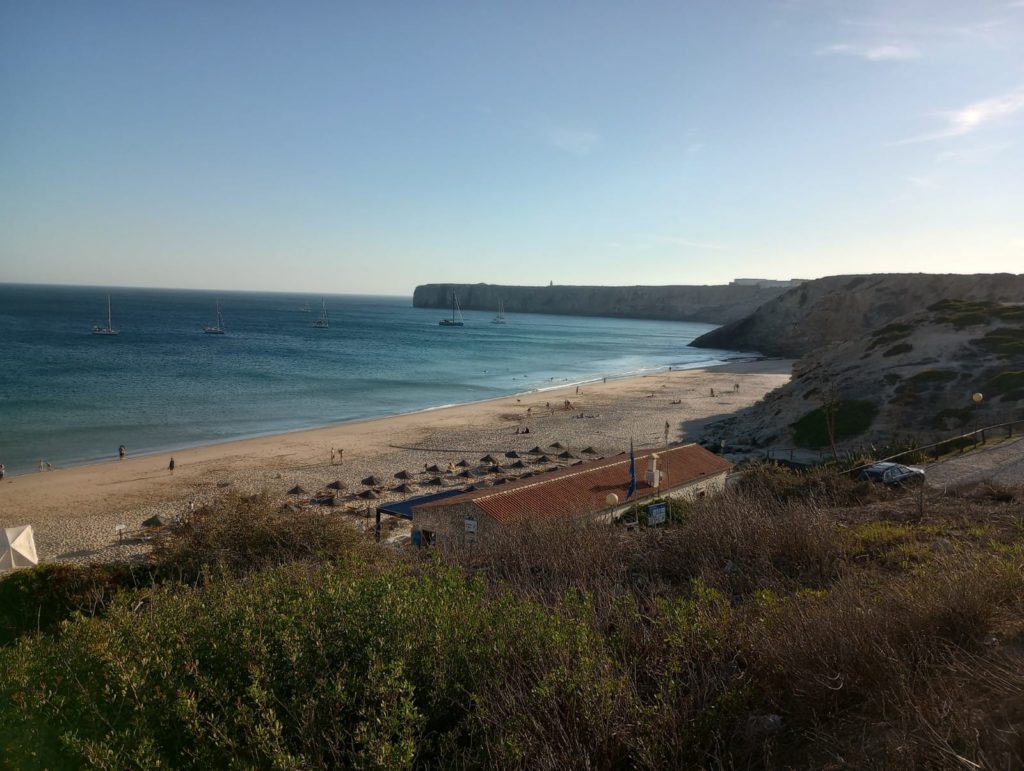
Sagres sits on the Western tip of the Algarve. A small traditional village with windswept landscapes and rough seas. Many people come here for surfing, and even though its the warm climate of Portugal, surfers still dawn wetsuits due to the chilly sea. We found it an unassuming place, barren and quiet, there seemed to be very little to do other than catching waves, and there were very few restaurants and shops. As we entered in before sunset, most kiosks were shutting up shop and salty surfers and beach bums left the beaches as they headed to their abodes. If you’re hoping to learn a bit of surfing, Sagres is the place to be with a handful of surf schools in the area.
Praia da Mareta
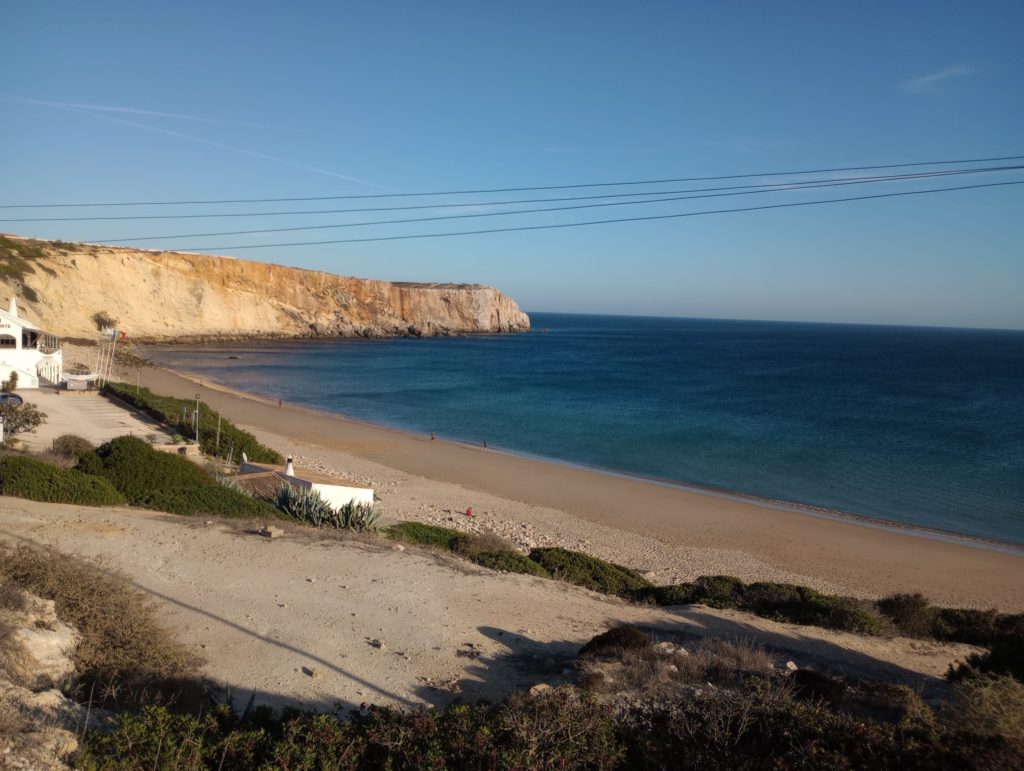
A long stretch of golden sand that is accessible from the village. If you prefer slightly less wind, then this is the place for you! Surfing off course takes place here, as well as paddleboarding, kayaking and swimming.
Sagres Fort
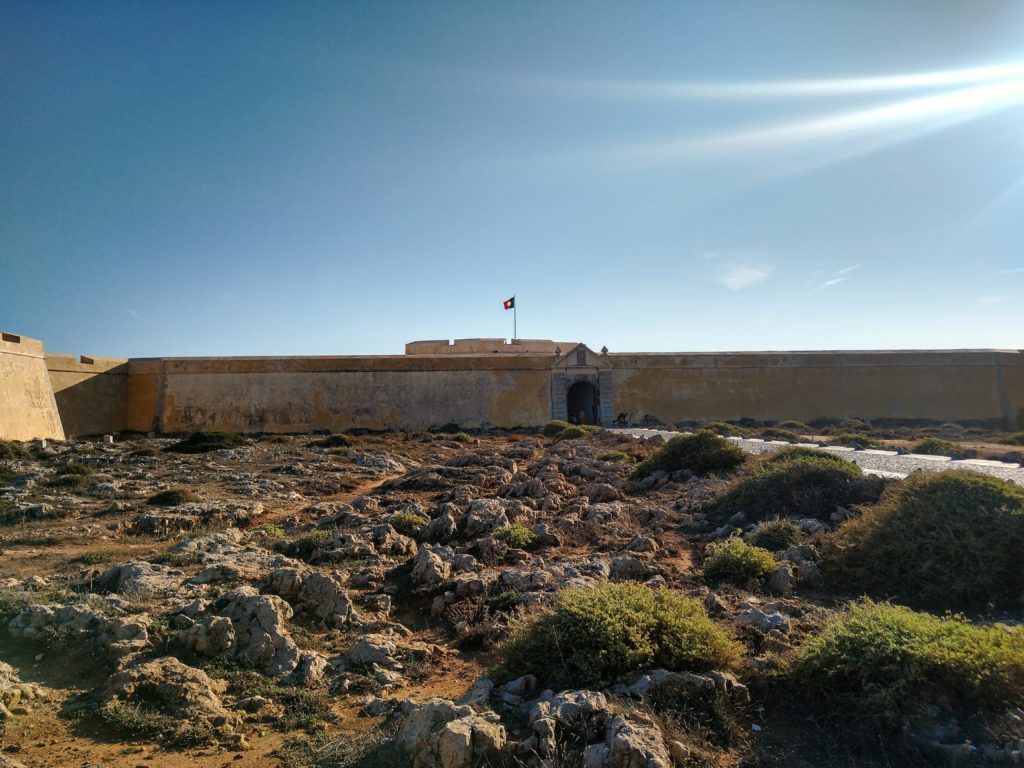
At the end of a stretched out, rocky, wilderness, on the coastal cliff edge of Sagres, stands the imposing Sagres Fort. However, after the 1755 earthquake/Tsunami; trashing the structure even atop the 60m cliffs, the repaired version was never quite the authority that it had once been during Henry the Navigator’s hayday. The barren, windswept, surroundings whipped up a cold solitude in the soul.

Cabo de Sao Vicente
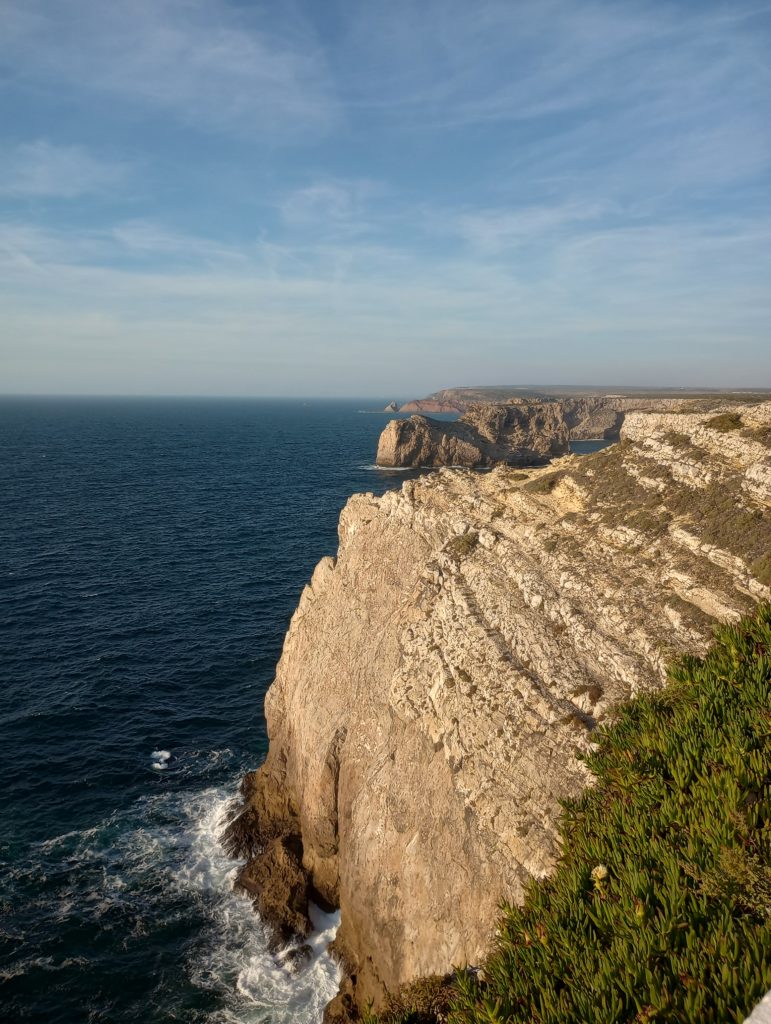
Europe’s southwestern most point is a barren headland 6km northwest of Sagres village. Until the end of the 14th century many believed this place to be the end of the world here. The jaggy cliffs rise 60 meters from the ferocious seas. As a visitor expect to be blown away with the views and also the heavy gusts of wind!
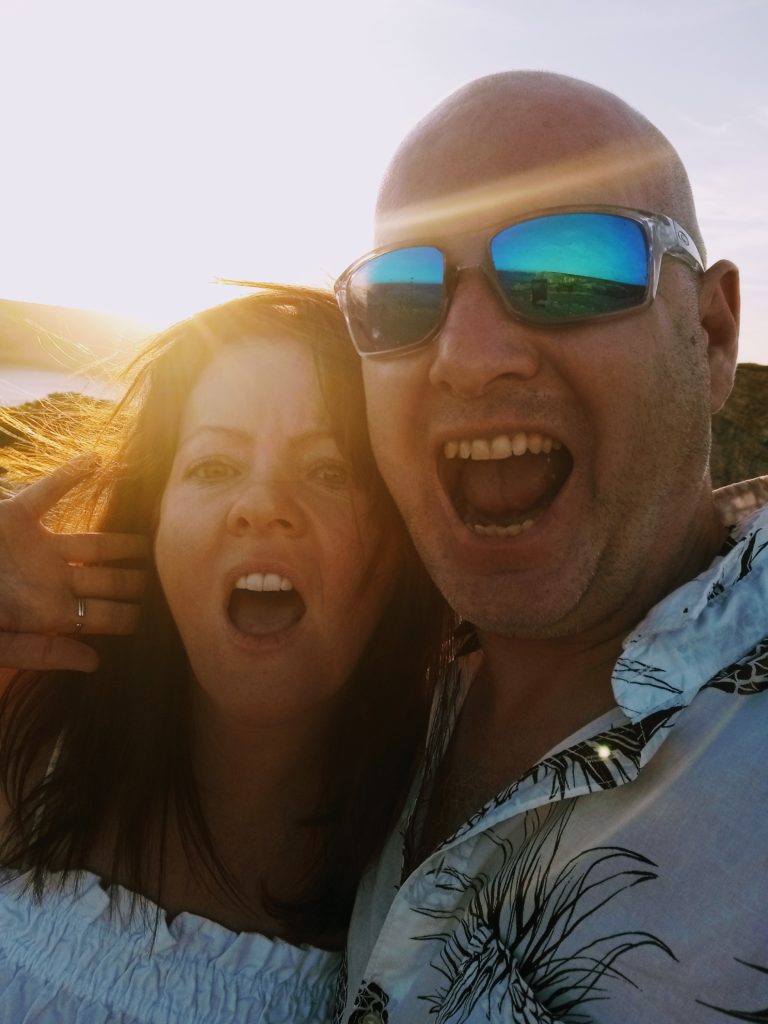
The strong blustery winds can match Malin Head in Ireland anyday!
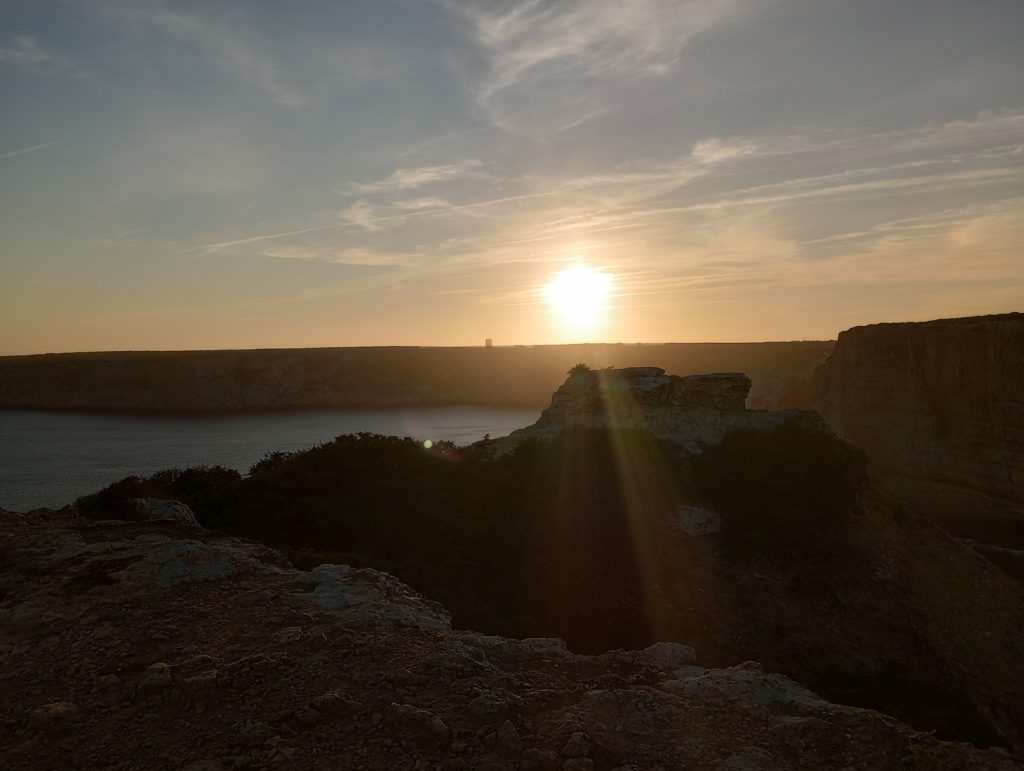
Some people are brave enough to hang around and watch the sunset in this dramatic cliff setting.
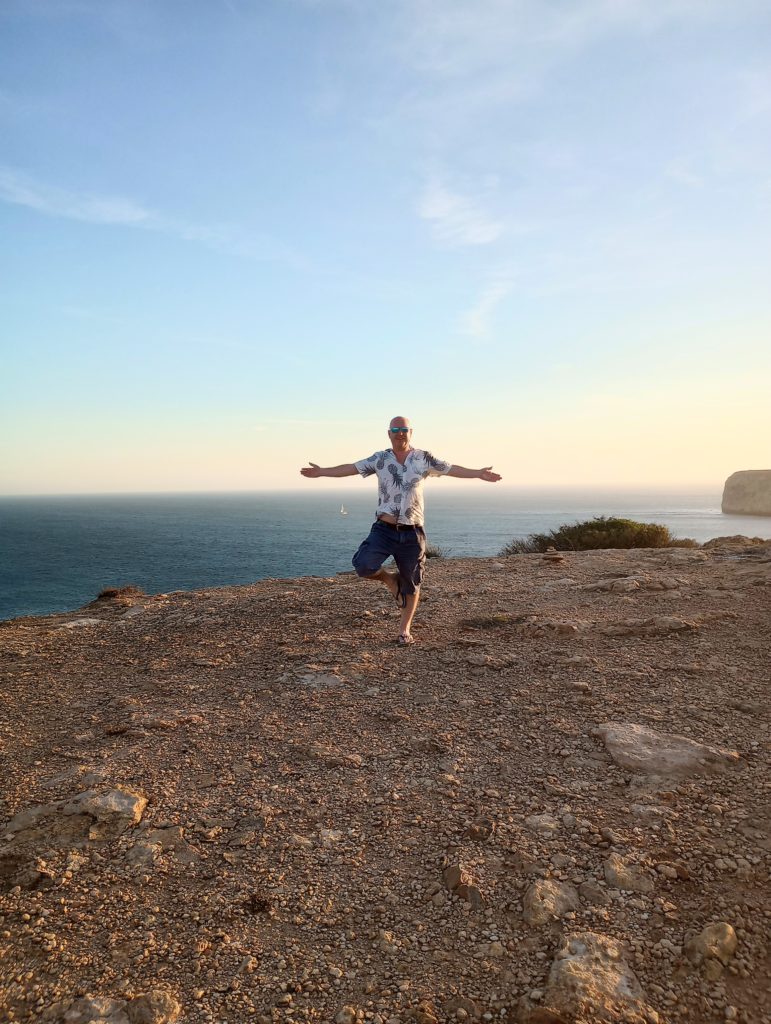
Lighthouse
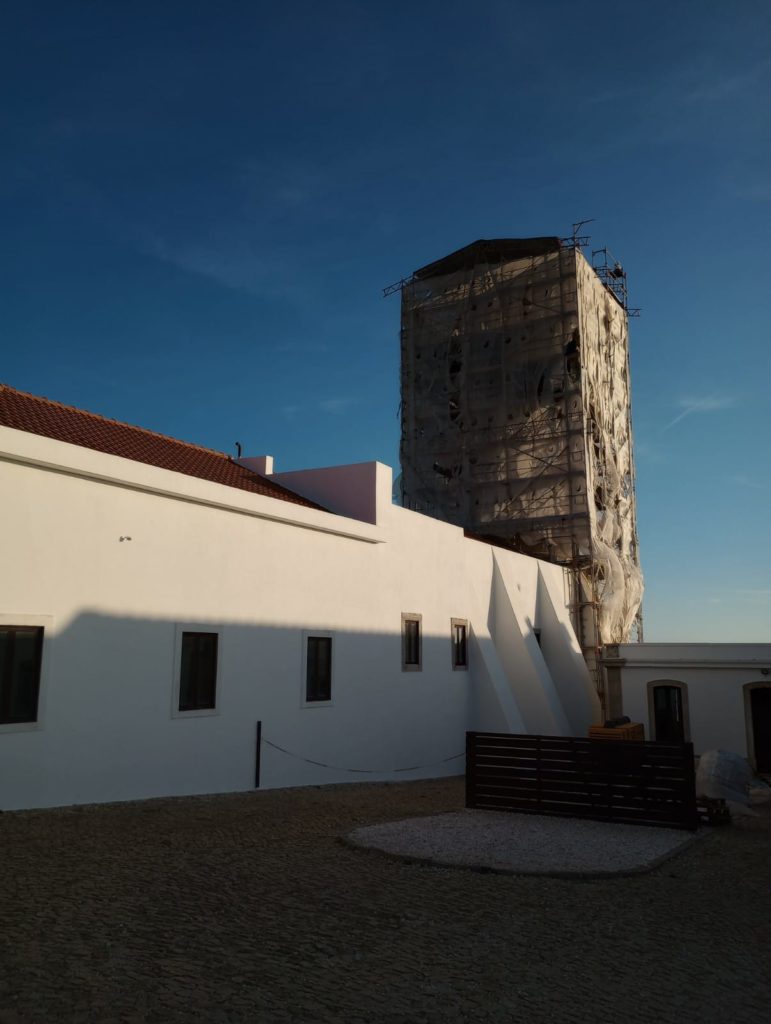
Sagres lighthouse is rumoured to be the place where Saint Vincent of Saragossa remains were found and protected. The lighthouse tower is around 43 ft, the lamp is characterized by a luminous red beacon that flashes at a two-second interval. The area was first occupied by Franciscan monks and to this day remains a holy site.
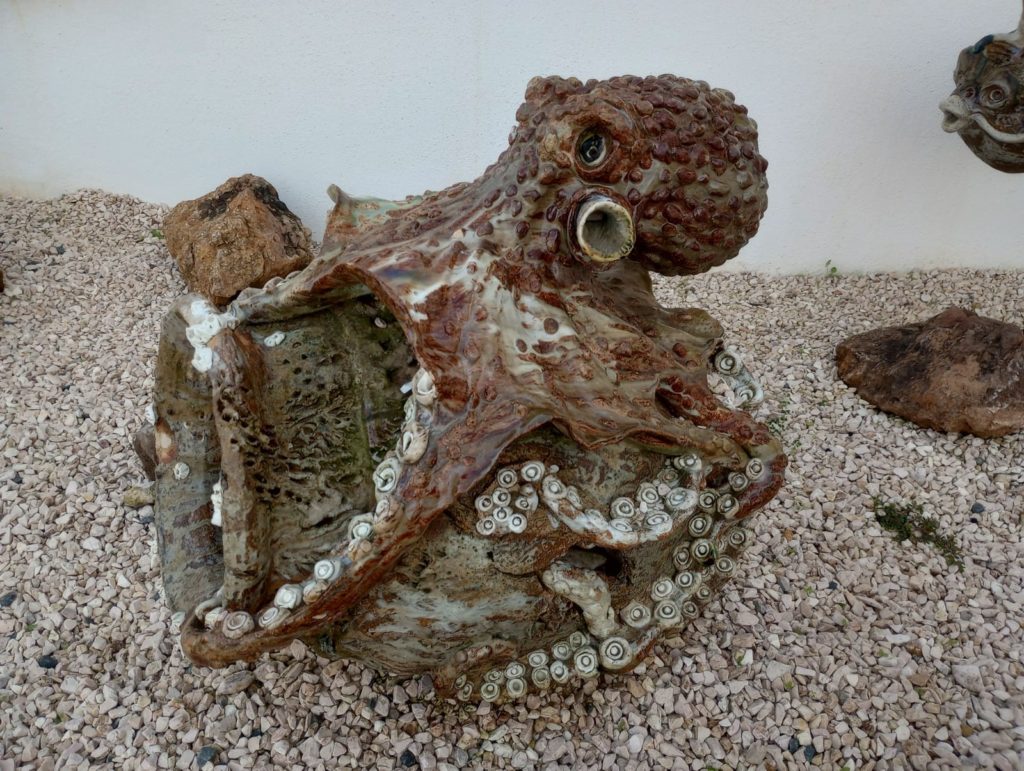
Silves Town
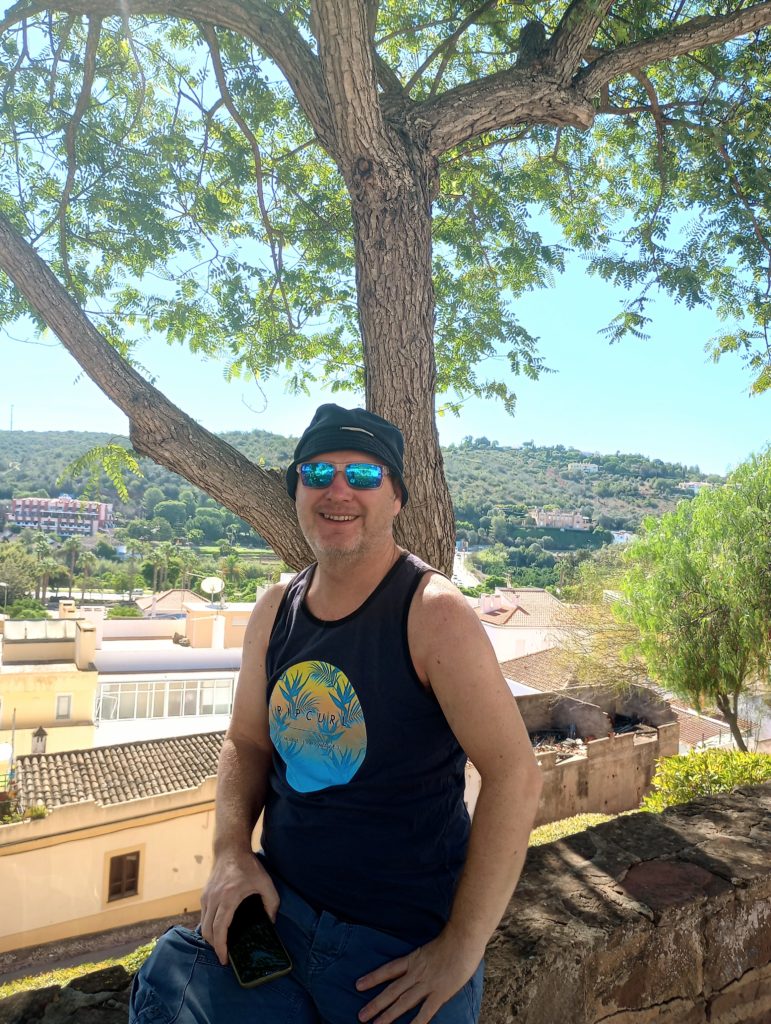
Silves is the former capital of the Kingdom of the Algarve, a nominal kingdom within the Kingdom of Portugal, and is of great historical importance, so we decided it warranted a short visit.
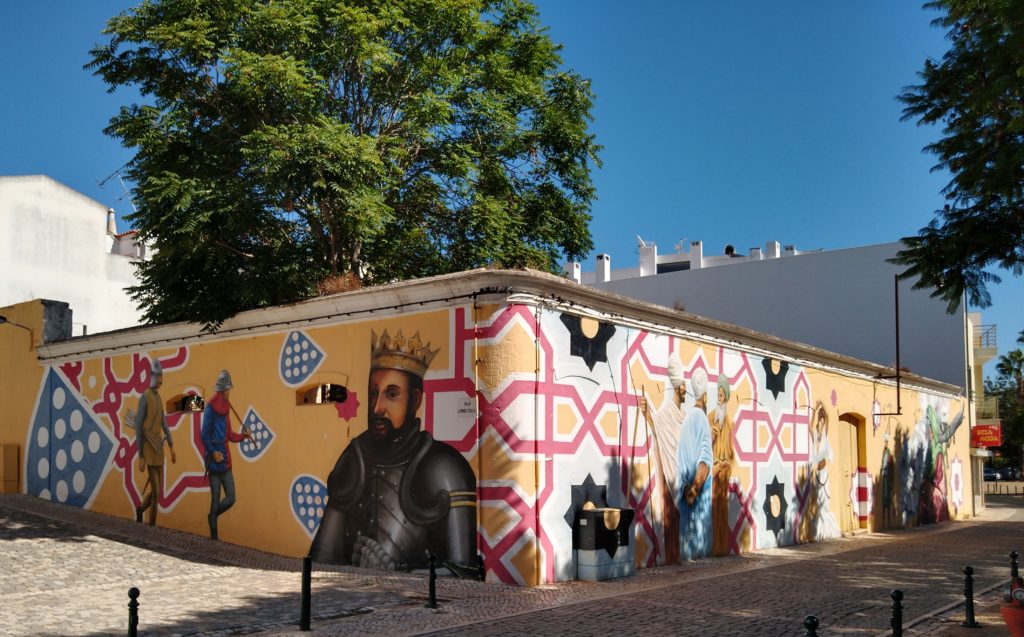
Arriving into Silves was like stepping back in time with its cobbled streets and sleepy demeanor. It was easy to be drawn into the rich history. The town certainly stands out with its Arabic architecture.

Silves was first conquered by the Moors in the 12th century and boasts one of the best-preserved castles in southern Portugal. Built on the site of the 11th-century Palace of the Verandahs, its turreted walls dominate the town and provide panoramic views over the surrounding countryside.

We didnt have much time to explore Silves to great lengths, so our main focus was the Castle and a stroll around the winding streets, soaking up the atmosphere and locals going about their daily business. The most entertaining part of our walk was stopping huge nests on the road to the castle as the suspicious storks protected their nests.
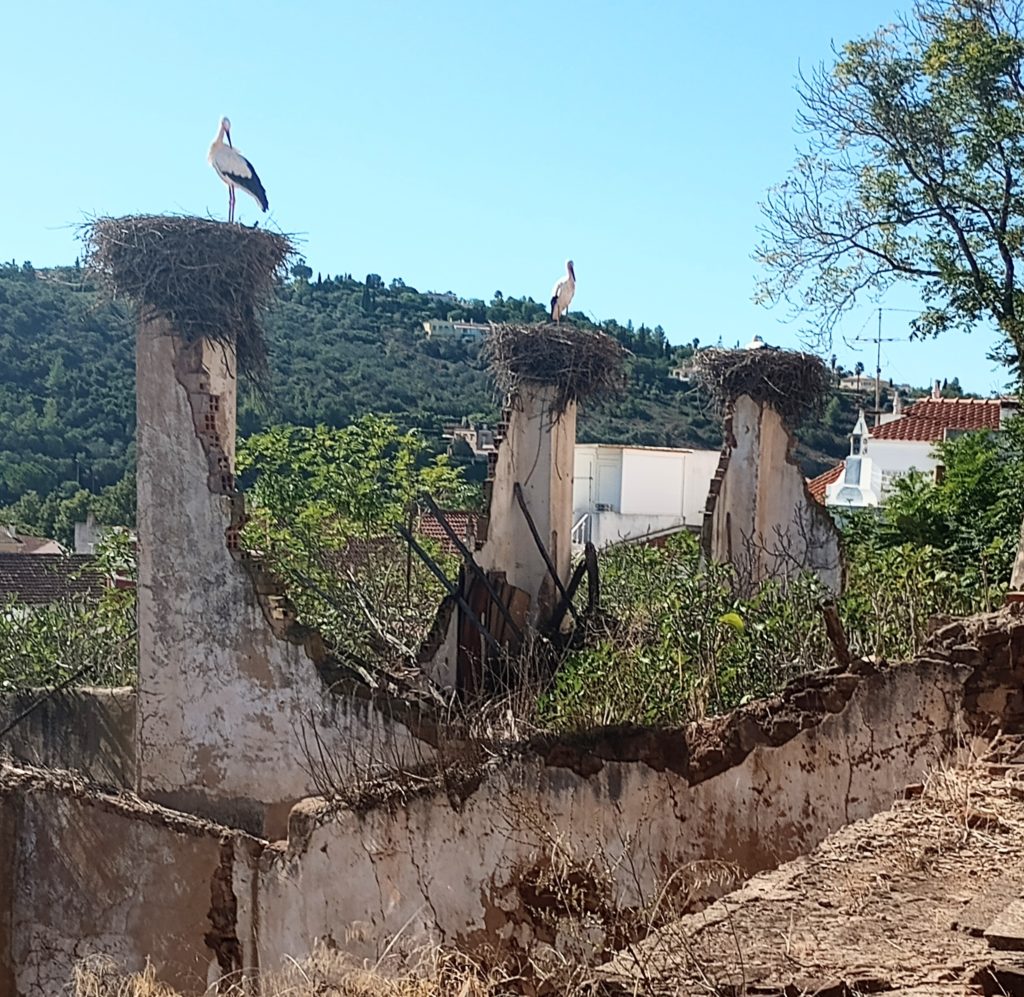
There is a selection of cafes were you can stop for a cold drink, coffee and snack.
The castle
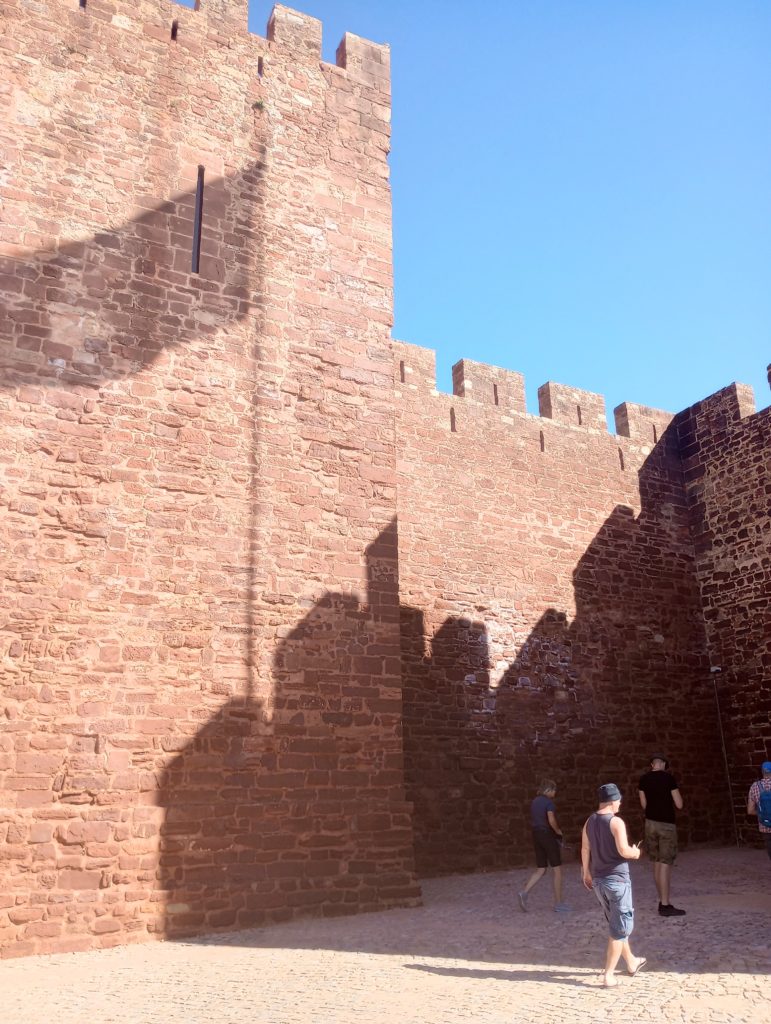
The red hued castle is the largest inPortugal and seen as the most stunning military monument, so much so that people flock from to this small town from all over the world just to it. There are fantastic viewpoints from the castle.
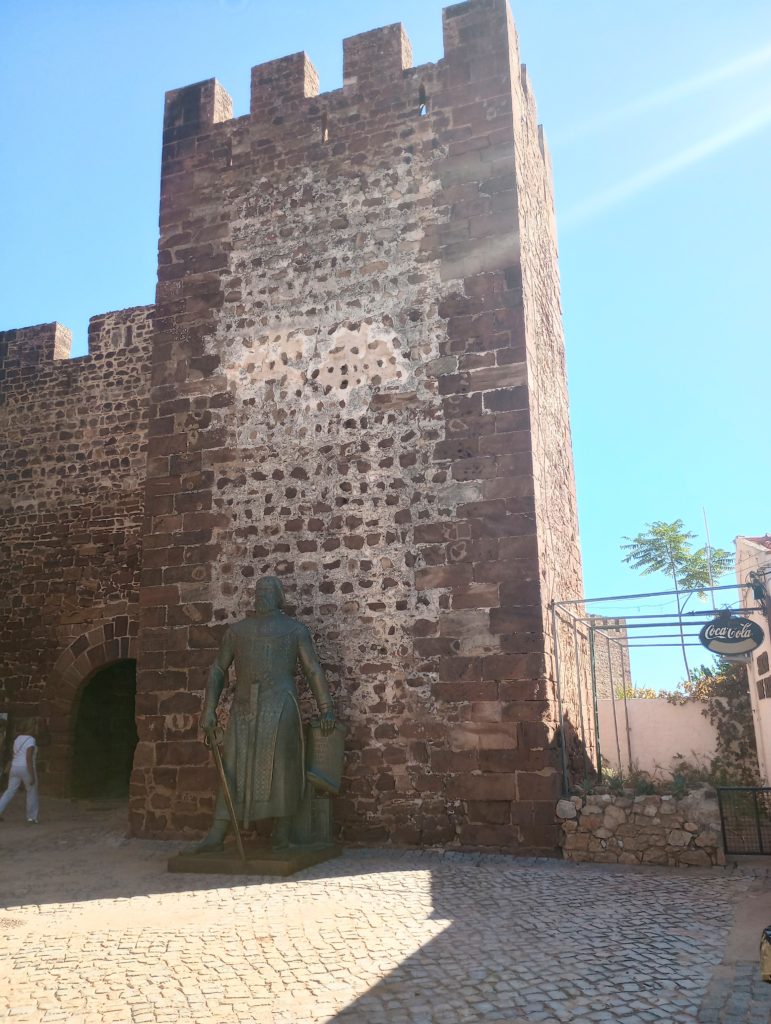
Faro
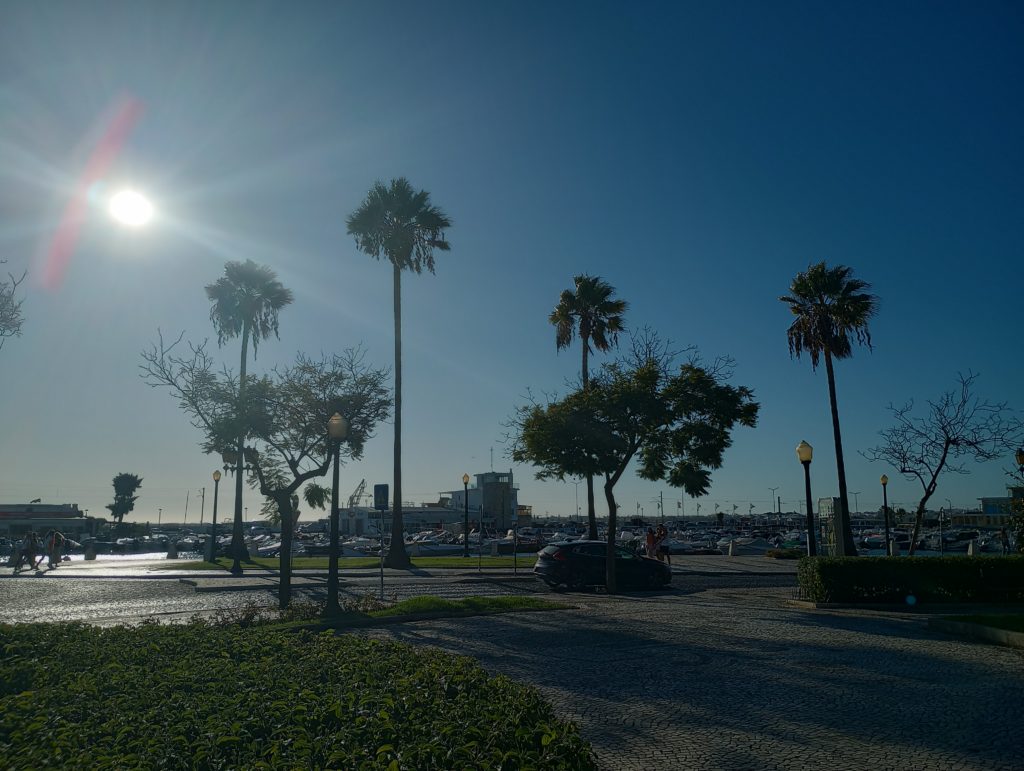
Faro is a small city and main attractions, restaurants, bars are easily at your disposal. There is a more distinctive Portuguese atmosphere compared to the resort towns. A day or 2 will give you the opportunity to explore what Faro has to offer without tiring yourself out. We didn’t put too much pressure on ourselves and decided to do a handful of things we wanted to see rather than sticking to the guidebooks string of attractions.
Where we stayed
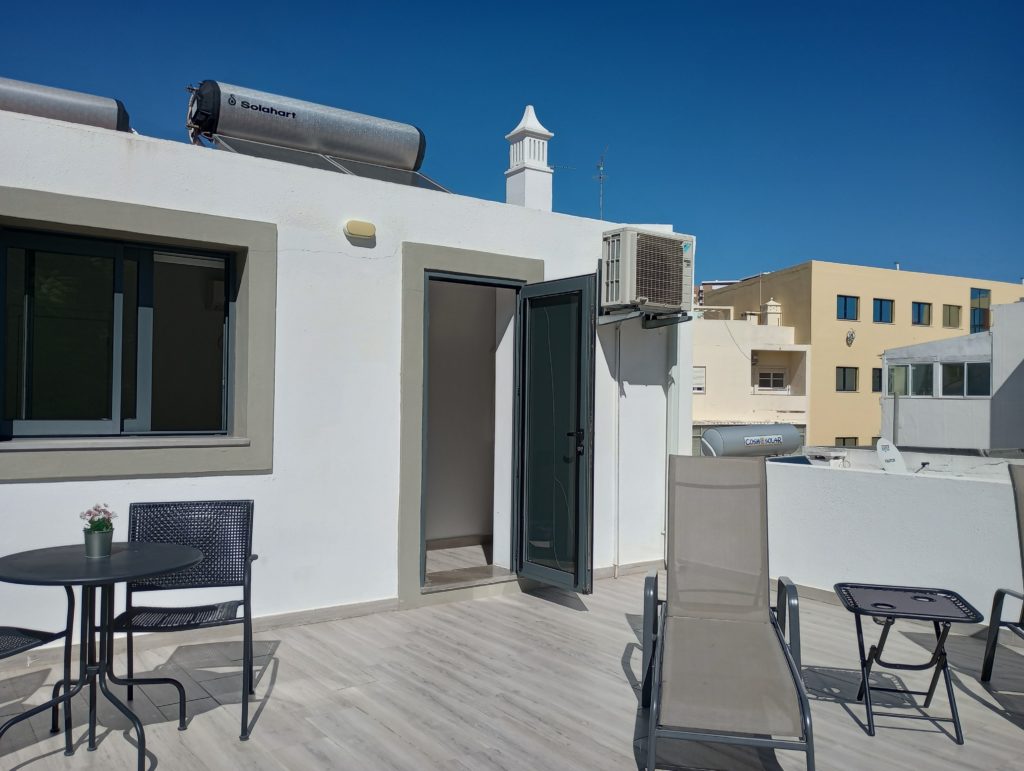
We opted for the Faro Clara Suites accomodation and we were not disappointed. It was a small establishment with about eight rooms and a shared kitchen on the ground floor. Paid street parking was available in the surounding area and we were situated right in the old town. They had a nice touch of leaving a couple of pastries outside the room in the morning. Our room was at the top of the house.
The room was spacious, modern, minimalist and clean, with a huge private terrace with loungers to soak up the blazing sunshine. We wished we’d booked longer here.
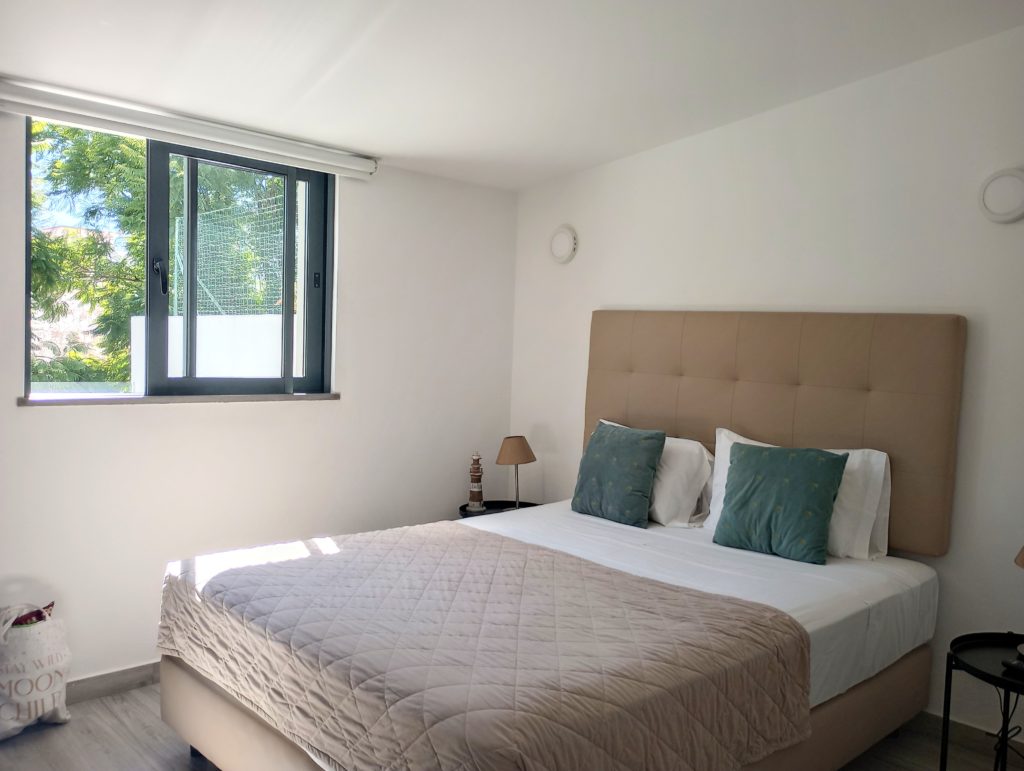
Faro Old town
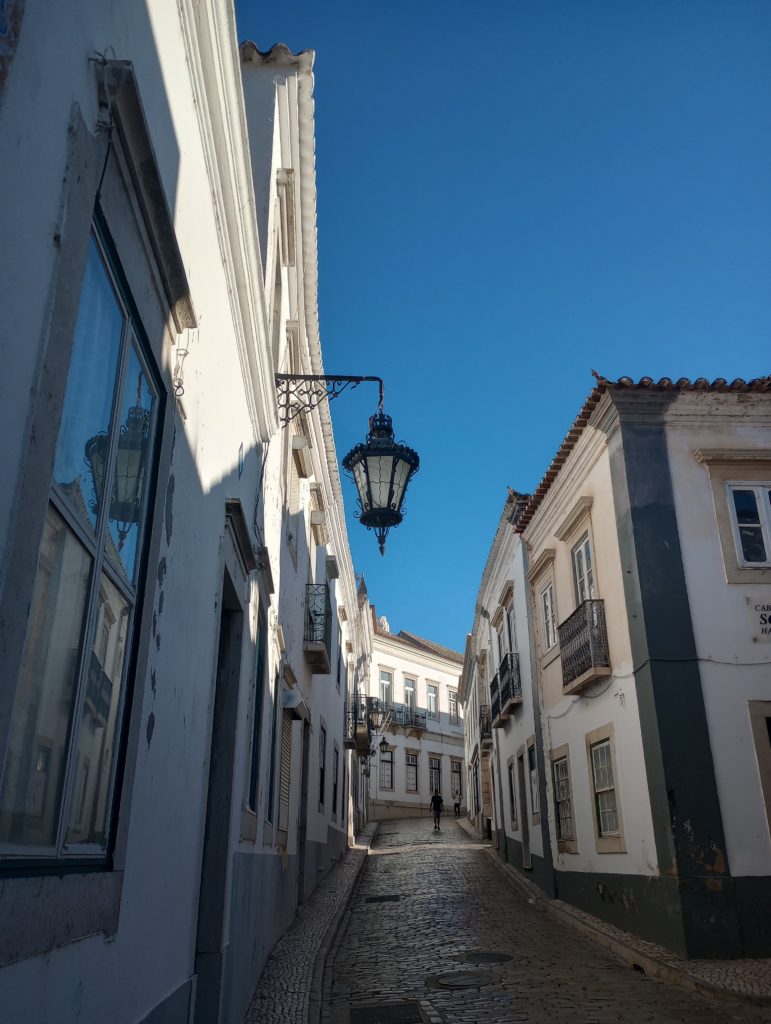
Picturesque streets and squares within a medieval wall.

It is pleasant to stroll through the old town’s cobble streets.
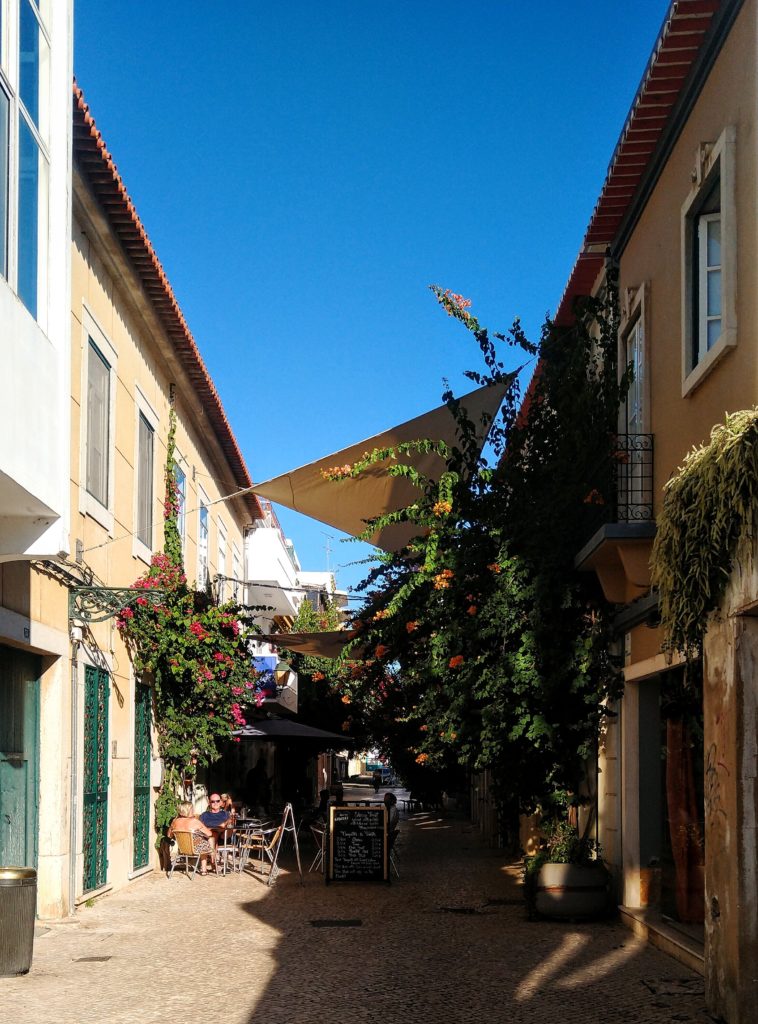
Sit at a little pavement cafe for lunch and watch the world go by, shop in a little boutique, or visit one of the more traditional stores.
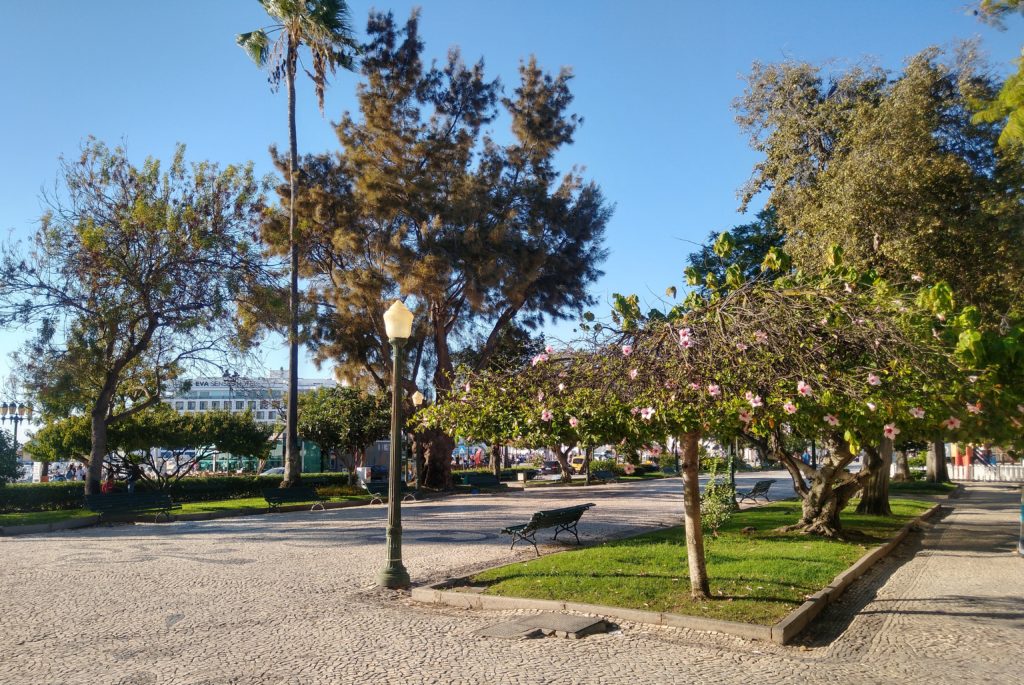
Relax in the water front Jardim Manuel Bivar and feel the laid back attitude of the Algarve’s capital.
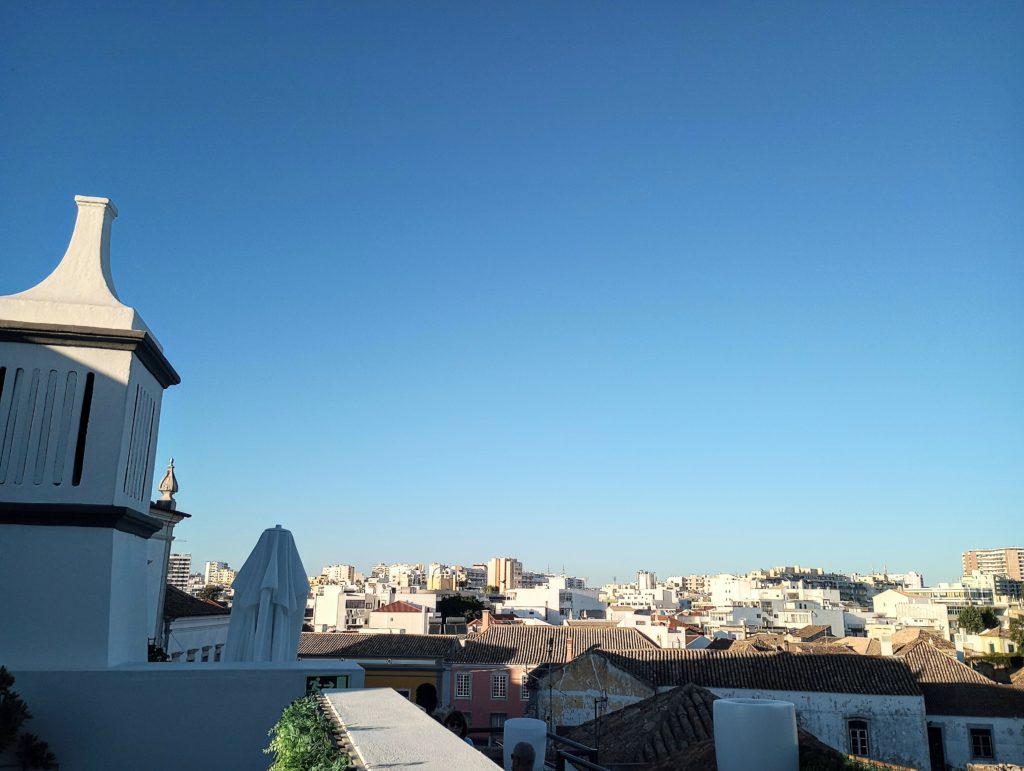
To quench thirst before dinner we called into a bar where ‘art in a glass’ cocktails flowed, sitting on the terrace overlooking this historical city.
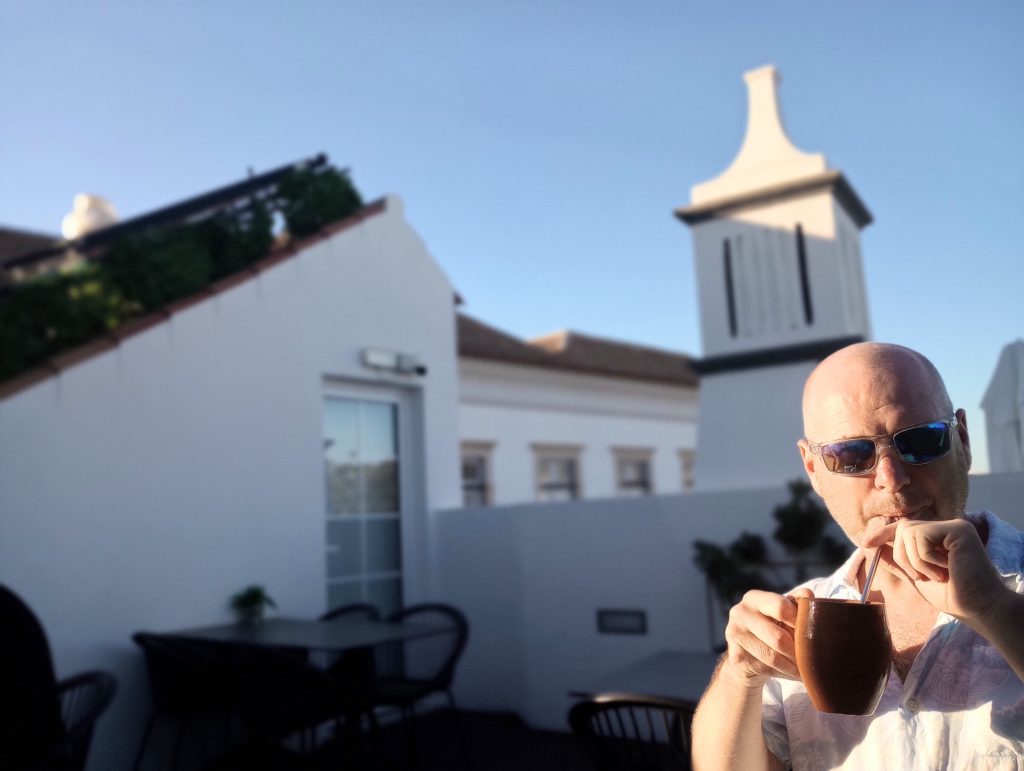
The cocktail bar was in the roof garden of Restaurante Cidade Velha. The setting, a stones throw from Faro Cathedral, was a great place for an apéritif.

Faro Cathedral
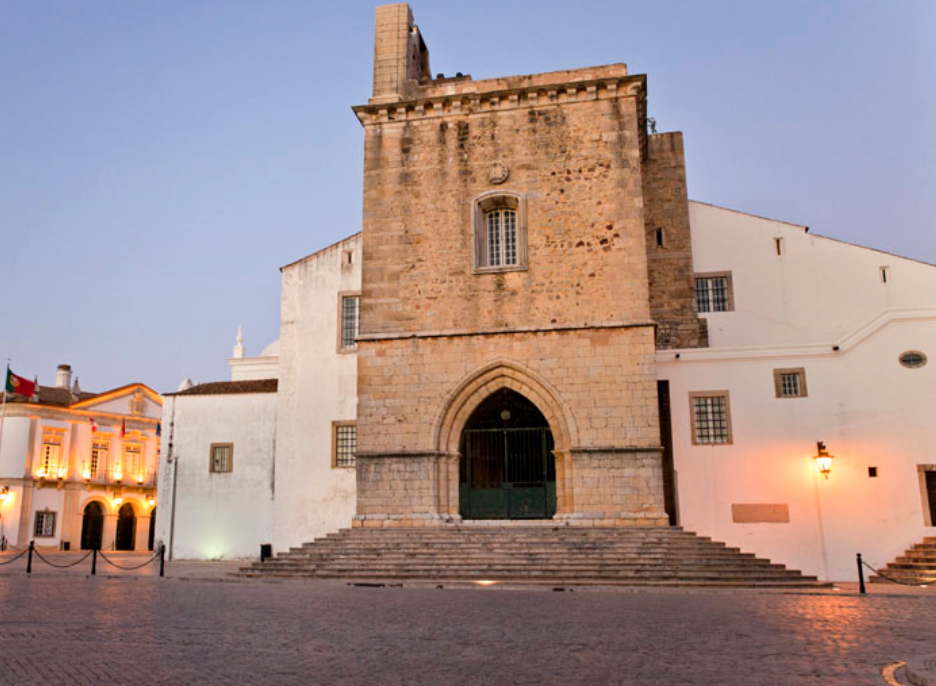
Restored over the ages the cathedral is a mixture of Renaissance and Baroque religious buildings. However, amazingly the entrance, as well as the tower, has survived earthquakes and invasions and has not been subject to changes.
It is interior is equally rich, featuring a large organ from the 18th-century with Chinoiserie details.
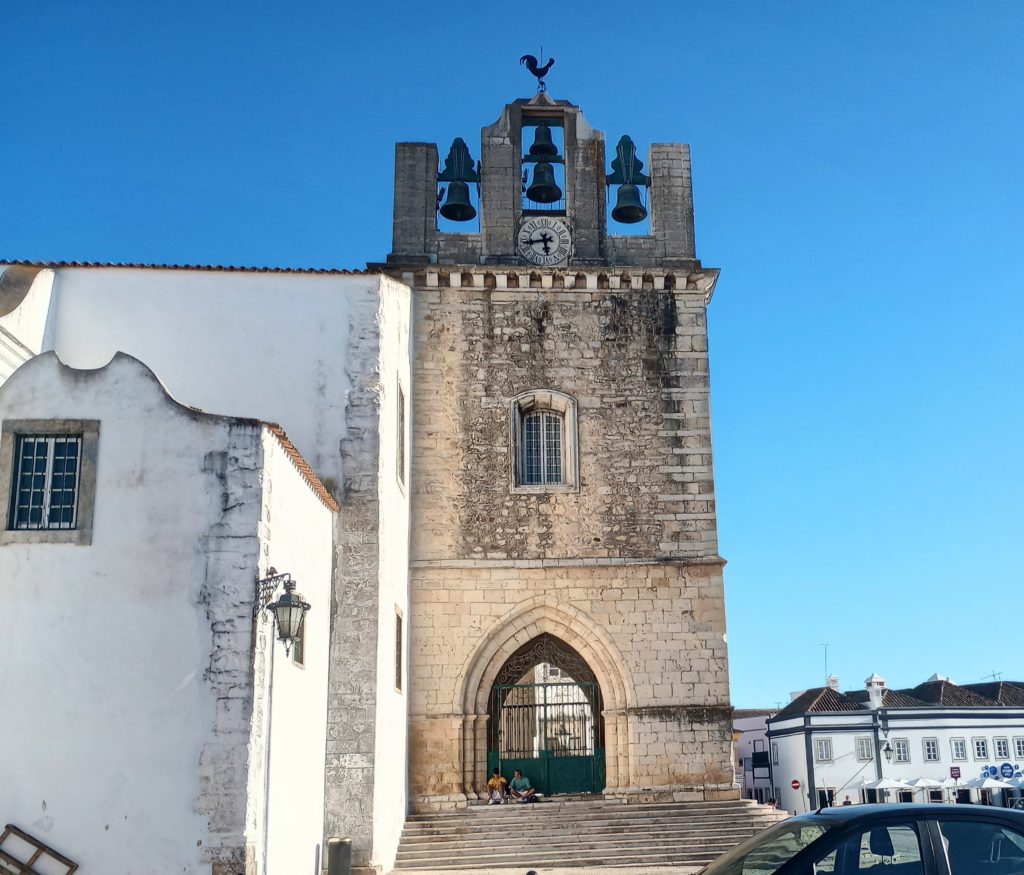
At the outer right end of the courtyard garden you can find an interesting bones chapel, which is made from human skull and bones, which what it’s name suggests. Climb up for views over the city to make you go wow, only 68 steps up to the top of the Bell Tower.
The coast
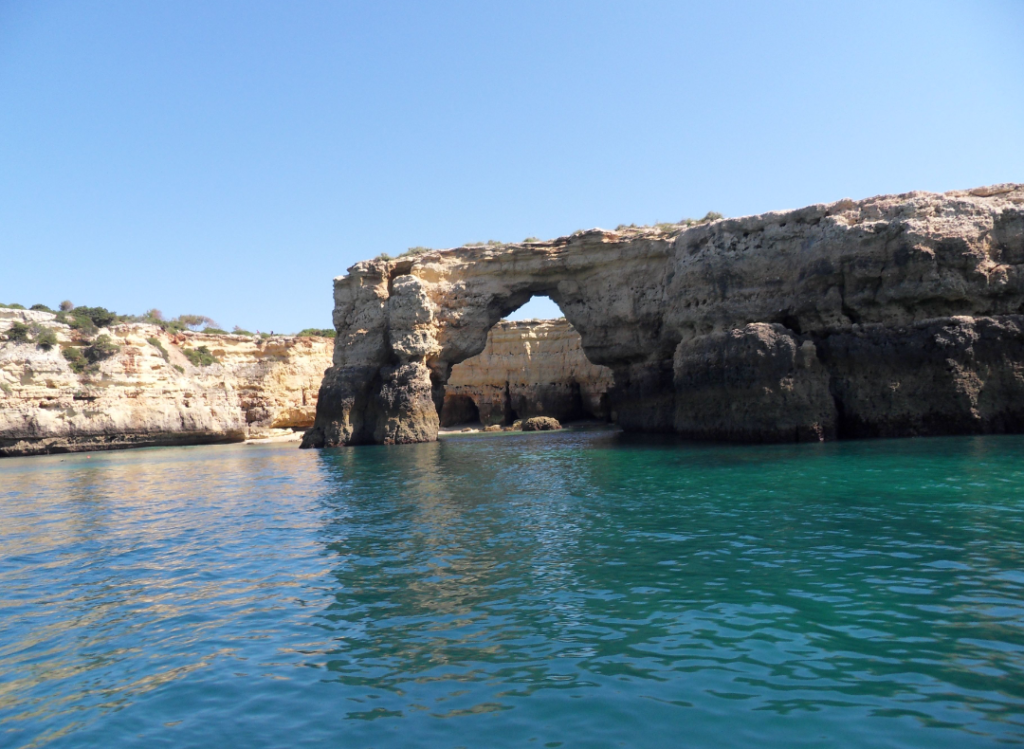
Off course you’ll want to see the coast when in Faro. It is a nature reserve protecting an immense lagoon that runs along the coast for 60 kilometres. The area is rich with Maine life and also a bird spotters dream.
Museu Municipal
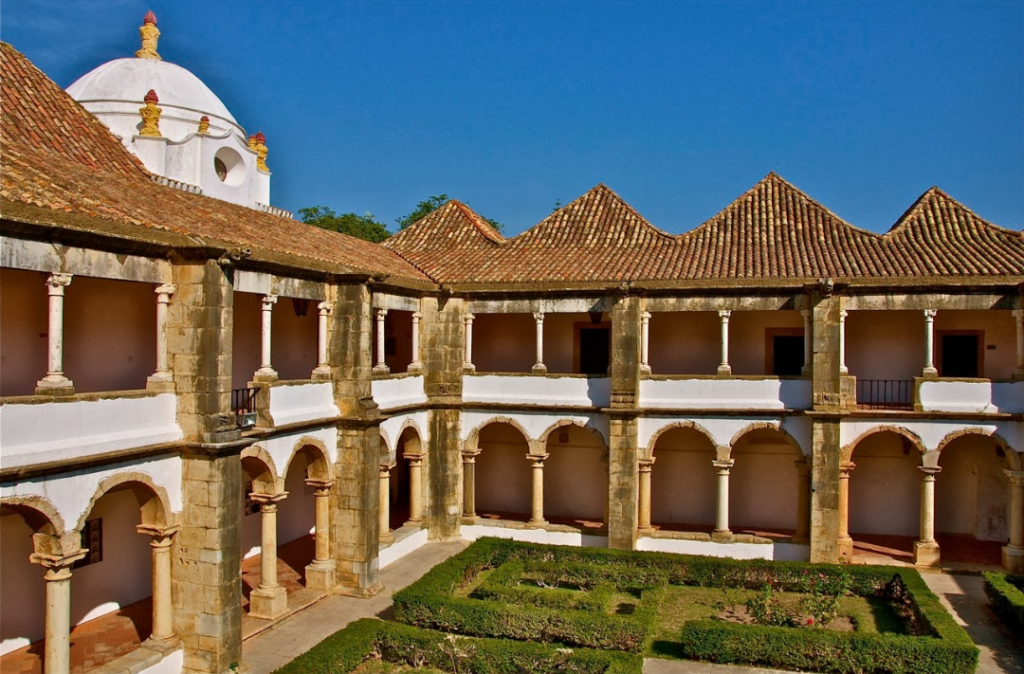
On most visitors list is the Museum, situated in a 16th century convent. The museum’s archaeological collection is the most significant, with artefacts from pre-historical, roman and medieval periods.
Palácio de Estoi
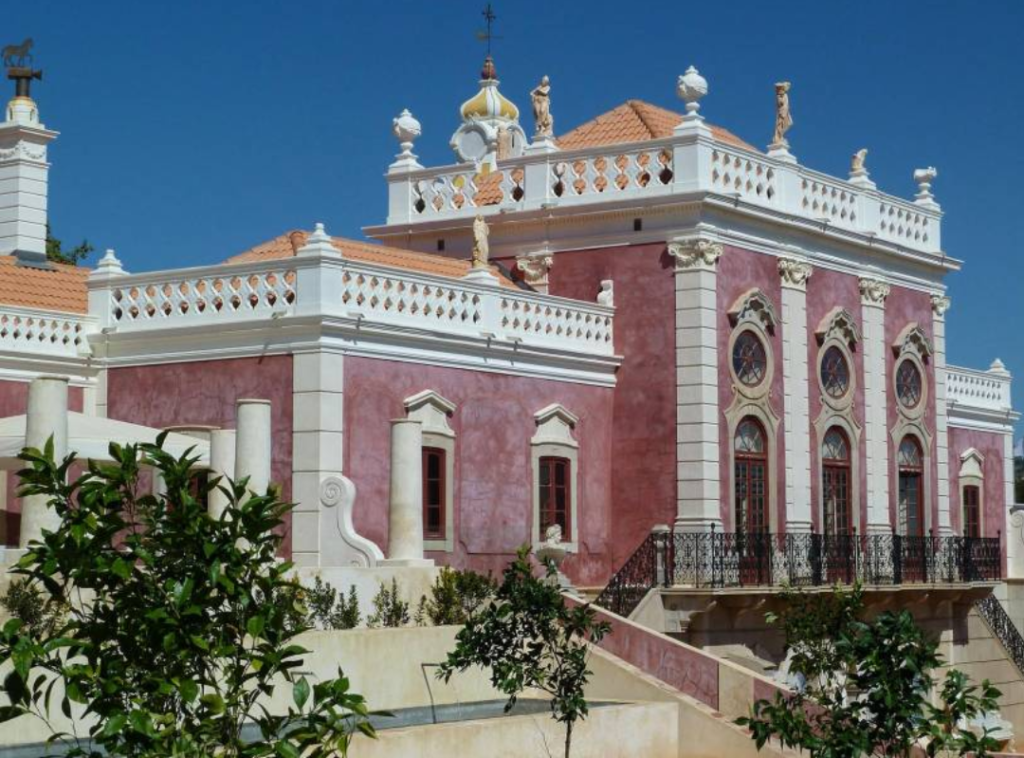
The palace is now a hotel but people take a day trip here, which is approximately 10km from Faro’ coastline. The pink boutique luxury hotel was a reminder of the pink city in Jaipur India. The palace hotel boosts some well maintained gardens which is the main attraction of visiting here. Inside the palace has kept most of its Original features.There is a mix of Neoclassical and Art Nouveau. There is also a swimming pool overlooking the mountains. It’s a grand classic hotel no doubt and to stay here it will cost you around £120. Not too bad considering and a nice treat!
Best Restaurant in town
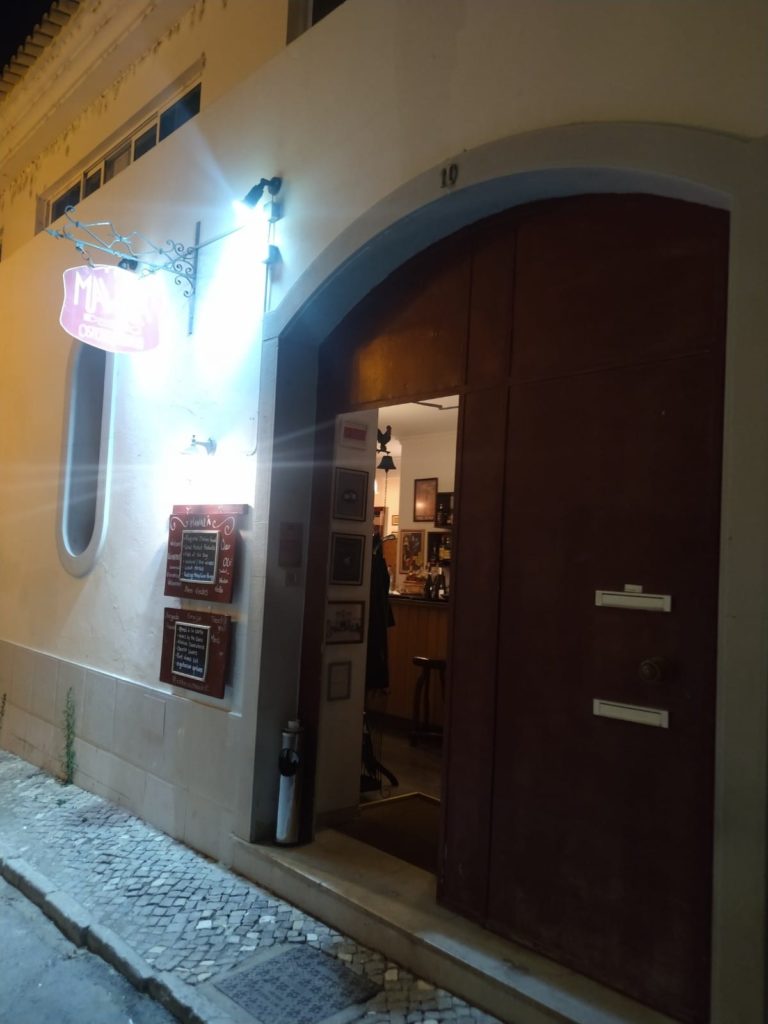
Portugal, for us, wasn’t the best for our vegetarian palate and most didn’t understand vegetarianism. Unless it was a cafe style places which only stayed open until early afternoon. Why is it vegetarian/ vegan places shut early? Do we all turn into gremlins at night!
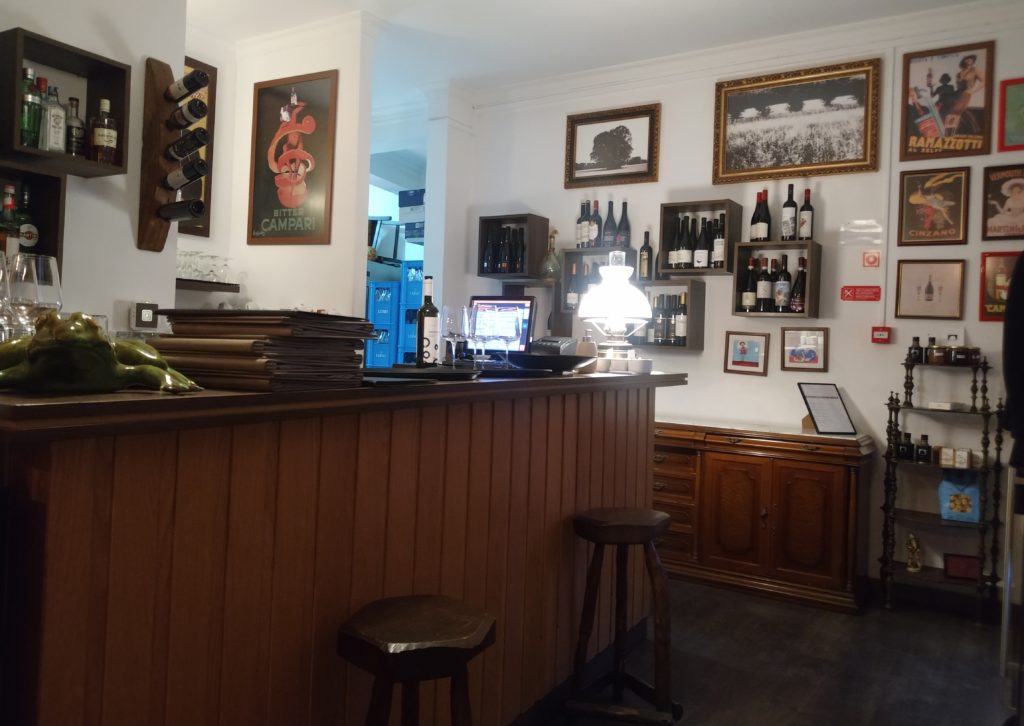
As we strolled through the cobble streets, hungry and no menu taking our fancy or none catering to our needs, I (Knox) deliberately stumbled across Mavala Italian restaurant. It had caught my attention while browsing the web earlier, and as nowhere else really grabbed our imagination, we passed a group kicking a ball about to arrive at this very unassuming hole in the wall.
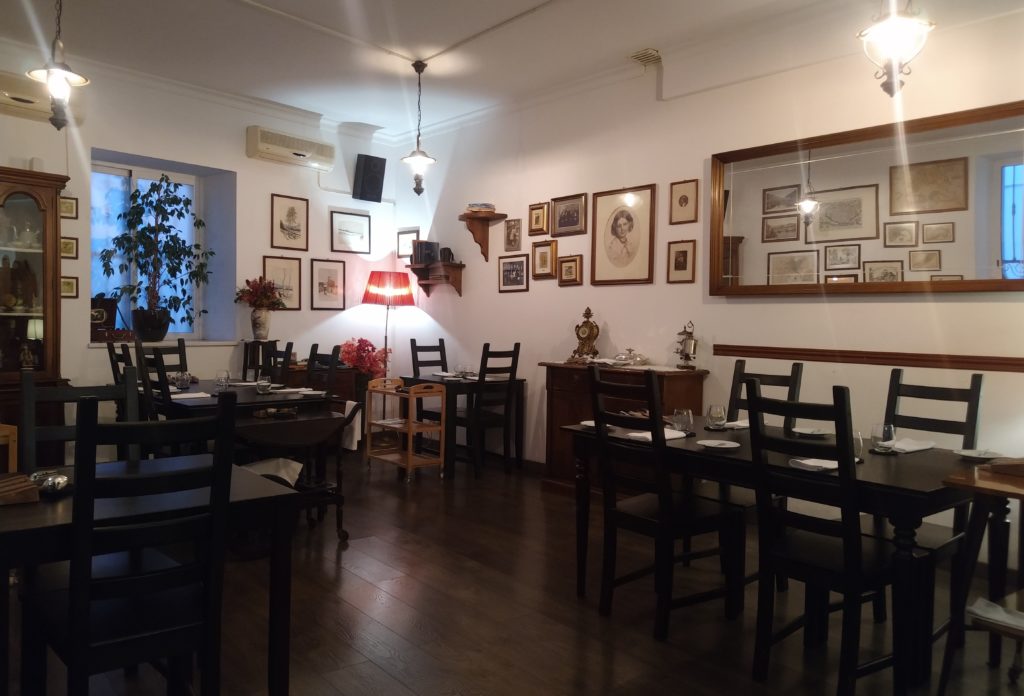
Inside, the restaurant stepped back in time, with an eclectic mix of old artworks and period dining equipment. It had a warm, homely vibe, and we were made to feel very welcome. Indeed our host eloquently described how they could cater for our vegetarian needs. While no particular veggie menu, we went with the flow. Indeed, the Milanese chef did not disappoint as the food was absolutely divine.
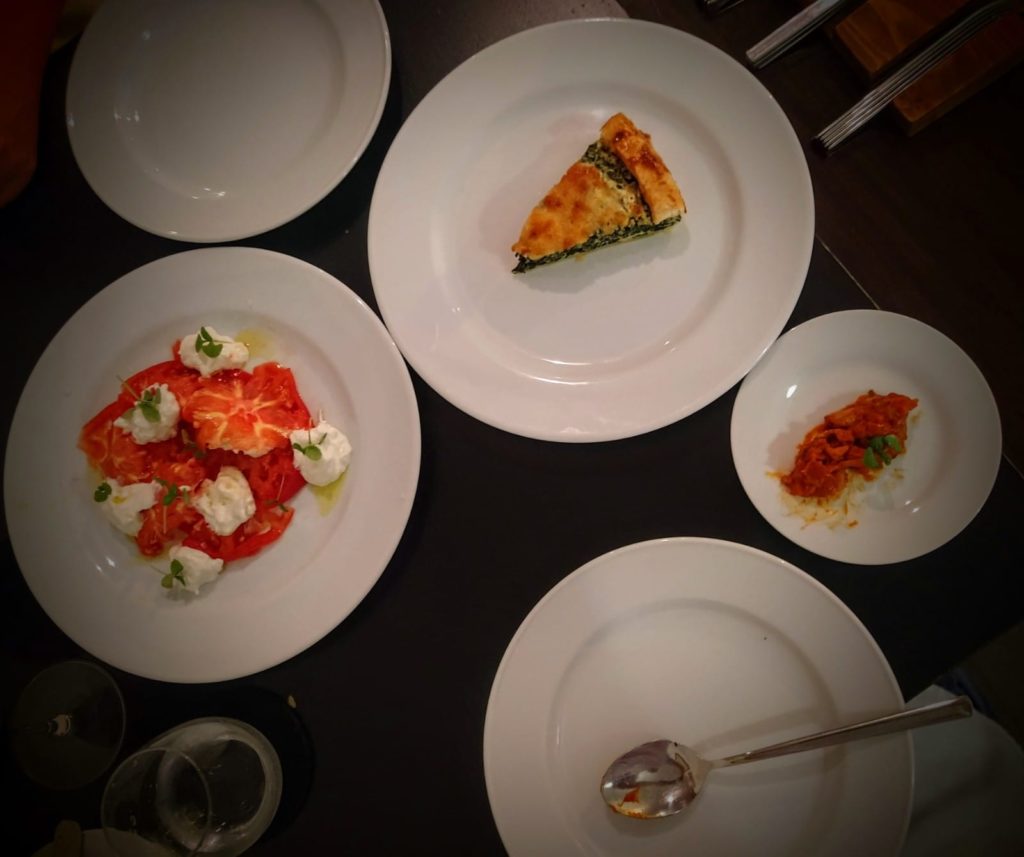
We had a caprese salad, with a side of mashed aubergine in a rich tomato sauce, for starters. This was accompanied by a spinach and ricotta quiche like tart. The flavours had the juices in our mouths salivating.
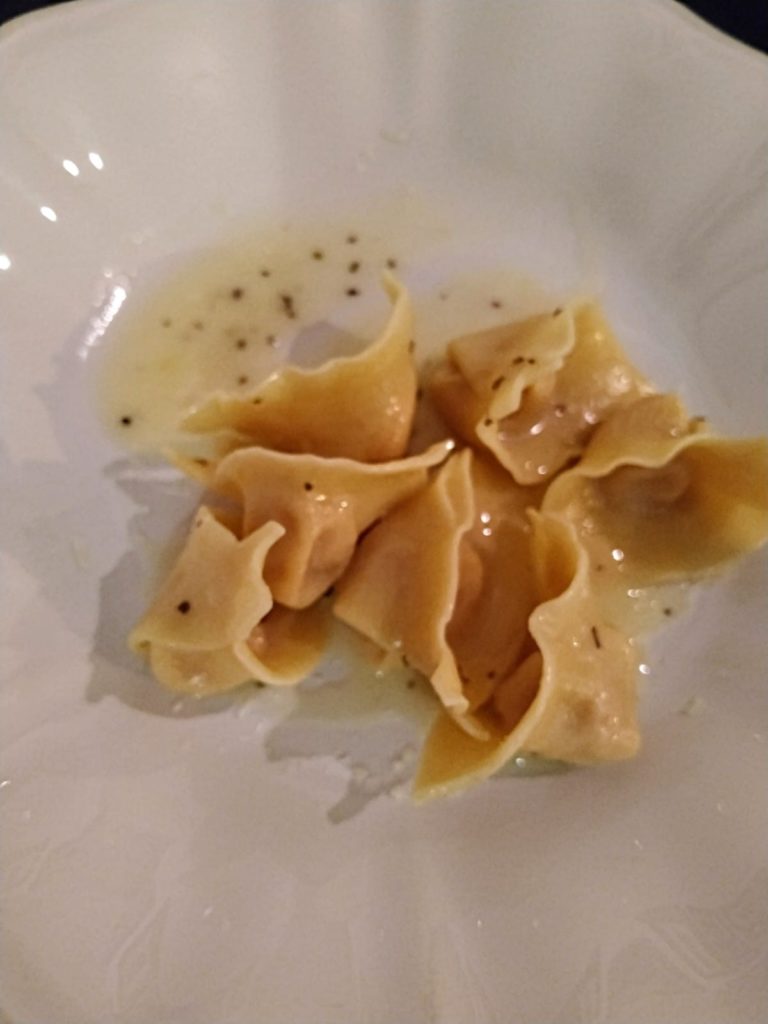
The main, a simple, but delicious, butternut squash ravioli in a butter sauce. The homemade pasta just melted in our mouths.The triumphant finale, a delicious dessert of sweet pasta wafer with a nutty cream filling. Of course all this was washed down with a Half bottle each of Italian white and red. A bonus was also the sweet shot of limoncello at the end. The experience was on a par with Michelin star restaurants, yet the price wasn’t such a hard hit on the wallet. Totally recommended!

The journey continues
Faro, and that delicious meal, was the perfect end to our sunny break in the Algarve. We have now ticked the Portugal box and have other destinations in mind. We will bring the delights to you as soon as we’ve tasted them.
In the meantime, If you liked reading about here, you may be interested in:
